By Scott M. Fulton, III and Tim Conneally, Betanews
There are two major issues on the table with regard to the creation of a national broadband plan. The two sides of the debate want their respective issues to be the focus, including in voters' minds.
The new chairman of the FCC, Julius Genachowski, and the incoming Democratic leadership would prefer that you be interested in the issue of ensuring public access to high-speed Internet service, particularly by preventing private interests from designing the system in such a way that they can charge premiums to select customers. This is at the heart of the net neutrality issue. The Republican "opposition" -- but the side which brought the whole matter to the floor in the first place -- would prefer you be interested in enabling multiple service providers to obtain national franchise licenses to set up broadband Internet service anywhere in the country at competitive rates, without having to pay municipal fees and obtain licenses for every square yard of space in America separately. That's the heart of what's now being called the open competition issue.
Depending on who has control of the floor and the microphone at this morning's open FCC hearing, you may hear both sides of this issue or you may hear just one. The meeting is scheduled to begin at 10:00 am this morning, though when Kevin Martin was in charge, Commission hearings often started late.

9:33am PT: The commissioners are customarily glad-handing and presenting awards to each other. The "important part" of this particular meeting has drawn to a close...We at Betanews are going to return to the FCC's activities today with the Technology/Applications and Devices Workshop at 1:30 ET where Microsoft and Google are expected to make presentations.
9:19am PT: The public does not have online access to the majority of the issues facing the FCC as they're not docketed in the current online filing systems.
9:17am PT: A new internal FCC Web site called Reboot.FCC.gov has been rolled out for employees to discuss and connect on issues. It will eventually be rolled out to the public.
9:12am PT: Semi-ironically, the FCC wants to "Modernize" its own communication techniques. This involves all the updates made last week to the FCC's interaction with the public in the online space: the RSS feed on FCC.gov, the FCC's blog, Twitter, Youtube, all handled by a "small, but focused" New Media team.
9:09am PT: Over the next five years, all of the FCC's disparate licensing, comment and complaint filing systems will be streamlined and consolidated. Next month, the improved Electronic Comment Filing System will debut, which includes enhanced search and accessibility.
9:03am PT: The final report is about reform efforts in the FCC, presented by Mary Beth Richards of the Special Counsel for Reform.
8:57am PT: The FCC's request for a definition of broadband received 68 "substantive" comments to help shape the commission's picture of what broadband actually is. Not that huge of a number, really, but they are likely discounting a large number of entries.
8:52am PT: Over 4,000 people have participated with Online FCC workshops thus far.
8:51am PT: Over the next few months, the Broadband Team will be reporting on the factual state of play, where broadband is, and where it will be in the next few years. In November, they will move into the problematic areas and move immediately into their solutions.
8:48am PT: Blair Levin of the Broadband team, that will be giving the presentation on devices later this afternoon will now be taking the stand.
8:40am PT: Pardon this momentary break, we're experiencing technical difficulties. The FCC's servers have apparently "reached capacity" and we're trying to make our way back in.
8:15am PT: John Leibovitz [sp?] takes the floor. Expands the context of the report to include broader aspects of the ecosystem.
NOI asks whether the framework for analyzing competition is sufficient, up to date. Traditionally used a four-part framework, is this the best framework out there? Is this the most state-of-the-art, analytical approach? Quantitative data, how can it be more precise? Questions about wireless market segments not included in previous reports -- spectrum, backhaul, towers, edge markets, content commerce, all of which rely upon mobile services to reach market.
General outline asks about specific topics: how competitive dynamics affect consumers, relationship between competition and ongoing investment, how wireless competition varies across geographies. Invites many stakeholders, including consumers themselves and software developers, plus such groups as device manufacturers and tower and backhaul providers.
8:09am PT: Secretary announces presentation on Wireless Competition Report.
James Schlichting takes control of the presentation, announcing three deputies and staffers. Two-part presentation, first part reviews reports on the status of telecom and media sectors, how efficient are those reports?
Paul de Sa, Chief of the Office of Strategic Planning and Policy Analysis. Commission is required by Congress to report on various sectors of the industry. Five categories of reports, including the wireless sector. Opportunity to implement a consistent analysis of competition among the various sectors.
Proposed approach is data-driven, relying on facts, not assumptions. Reflecting the actual experience of consumers, customers, across appropriate customer segments.
8:05am PT: Genachowski: Innovation is core to the FCC's mission. "We're at the beginning of a wireless revolution, the first inning of a set of developments that will be so important to our country."
Transformation from mobile voice to mobile broadband, using smart, mobile computers "that can do almost anything at all." Smartphones may outsell PCs by 2011. "It is essential that the US become the leader in this wireless marketplace globally." Impossible to forecast social impact on Americans, but innovation will support the great companies and industrial segments of tomorrow. Health care, innovation, energy, public safety all depend on this development.
How spectrum is licensed, how interference is defined, how equipment is licensed, how tests are authorized -- all have an impact on how the wireless marketplace will develop. PCS auctions, creation of "unlicensed regime" for Wi-Fi, Bluetooth, models of FCC successes. There are also models of FCC failures.
"It's important to note that the nature of innovation is not constant." Digital era allows for greater collaboration, rapid innovation, and shorter time-to-market. Created a new generation of innovators.
Vote on NOI: Unanimous.
7:59am PT: Commissioner Meredith Attwell Baker takes the floor.
Pleased that this will be the first vote she casts as a commissioner.
Hope to acquire a comprehensive understanding of developments that promotes better and more efficient use of spectrum. Worried about hindering future business models' growth. Unparalleled innovation and growth in wireless over the past 10 years. $22.8 B per year invested by the industry on broadband services. "We stand on the verge of the next generation of wireless broadband products," and government should be careful not to regulate too much and hinder that growth.
Questions whether stakeholders will be able to yield substantive responses. Refrain from imposing burdensome regulatory obligations on industry.
7:56am PT: Commissioner Mignon Clyburn takes the floor.
"The wireless marketplace continues to evolve." Extent to which inquiry will lead to greater competition, will only benefit the consumer.
Cost factors associated with re-allocation of spectrum. NOI recognizes that re-allocation is an ongoing challenge and "a handicap on wireless innovation." Item raises appropriate question on how better to manage spectrum interference.
7:53am PT: Commissioner Robert McDowell takes the floor.
Wireless market appears to be robustly competitive, with 95% of consumers surveyed having a choice of at least four choices of carrier. Choice has been going up, so wireless penetration has been broad and quick, even in the midst of "the worst economy in decades." $80 B to be plowed into capital expenditures to make broadband services faster, more affordable. No other sector in our economy can make such a claim.
Shows the success of "how a light regulatory touch...works." "Where we go from here is not yet clear, but where we have been is clear." FCC's long-standing policy to let market forces foster their own development in services, has led to remarkable advances. So FCC should proceed with care, attracting more private investment capital rather than deterring it.
A 30-day period is too short a window for public response, possibly shortening the window for meaningful input.
7:48am PT: Seeks to identify the retail market segments that should be examined. Seeks additional data on both upstream (infrastructure) and downstream (content) markets.
Will consider a notice about consumer information and disclosure, so consumers will receive more and better information about consumers making purchasing. "We have not done much of a job" in this department, things "could have been better, sooner." Monthly bills are a regular agony for consumers, more so for what they fail to disclose and the amount of paper used to disclose it. Better wireless geographic maps would continue to be helpful.
7:45am PT: Increasing complexity, but "open access" should best promote innovation. What can we learn from the Internet model, where open platforms has spurred innovation and productivity?
"As we enable wireless technologies and services, we enable America to meet and master many challenges," said Copps.
Expanding the scope of the annual competition report to Congress. Wants to expand the depth to become more granular [both Democrats and Republicans will be pleased by this part, but I'm wondering if this is the bone the new FCC is throwing to chase the GOP off the trail of national franchising.]
Commission has the responsibility to stop playing "unhelpful games" with altering spectrum allocation screens, and to go back to ensuring competition rather than providing a free path for big service providers.
7:42am PT: Declining commitment to basic technology research and development, which Copps calls a "tsunami." Blames "speculators on the make" as triggering the fall in value of investment, then with government withdrawing its interest, that constituted a "double-whammy" which has impacted wireless industry growth. "We need to understand these things, and we need to act upon them."
Seek to understand how key innovations are occurring in the wireless chain. What has gone wrong? What are other countries doing to promote innovation? Improving the Commission's understanding and analysis of these matters will help it promote investment.
7:39am PT: Commissioner Copps takes the floor. Three NOIs under consideration go to the heart of main goal of protecting consumers. Commends Genachowski for bringing this to the forefront immediately.
"Lay the groundwork for sound public policy making."
Innovation: 21st century will be about "stunning and transformative innovations," more so than in the 20th century. Wireless industry deserves recognition and credit for what it has accomplished, "but mark me down as one who believes that we have only glimpsed the beginning."
We look to industry for guidance, but innovative public policy should be the handmaiden for guiding private enterprise.
7:36am PT: How can spectrum be used more efficiently? "Wireless networks are evolving to more IP-based and platform architectures." What role can the Commission play in encouraging further development and investment in these areas? Quick mention of the licensing program and possible reform in that area.
7:35am PT: Presenting the presentation on wireless innovation is James Schlichting, acting chief of the Wireless Telecommunications Bureau of the FCC. He passes the floor to Deputy Chief Joel Taubenblatt.
What changes can the FCC make to its policies to encourage more outside participation in the development of wireless services? That's the subject of the proposed Notice of Inquiry (NOI) under discussion first.
The NOI wants to seek information about the state of wireless innovation, says Taubenblatt. What metrics and data sources should the FCC be treating as important, especially with regard to what the industry treats as important? [This is a particularly important issue to Republicans in Congress, who have argued in the past that the previous FCC spent too much money and resources investigating metrics that didn't really matter to real businesses.]
7:29am PT: Genachowski begins by praising the recently deceased Dr. James Marsters, co-creator of the TTY, as a model for consumer advocacy in the telecommunications industry.
Competition, he says, is essential to ensuring Americans' continued access to the information they need to better themselves, especially through education. Credits the iPhone, Pre, and BlackBerry as among the classes of mobile devices that are forcing the issue of ensured mobile broadband to the forefront.
Secretary now formally introduces the day's agenda.
7:22am PT: Today's hearing is the first full meeting to include newly appointed commissioners Mignon Clyburn and Meredith Attwell Baker.
7:18am PT: Introductions have begun reasonably on-time, and the formal discussion has yet to begin.
Copyright Betanews, Inc. 2009
















 Catering to applications that need to query huge stores of data very quickly, Amazon announced High Storage instances for its Elastic Compute Cloud (EC2) cloud application platform on Friday. They fall in line with Amazon's High CPU, High Memory, and High I/O instances.
Catering to applications that need to query huge stores of data very quickly, Amazon announced High Storage instances for its Elastic Compute Cloud (EC2) cloud application platform on Friday. They fall in line with Amazon's High CPU, High Memory, and High I/O instances.



 Finally, the ever-important platform support has been expanded, and Windows 8 is supported in this release. Support for Samsung Android devices has been improved with an API that SAP co-developed with Samsung, and support for iOS devices has expanded to improve support for jailbroken devices. Whitmarsh told us Windows Phone 8 support is being worked on, but it won't be included until a service pack release in the "near future."
Finally, the ever-important platform support has been expanded, and Windows 8 is supported in this release. Support for Samsung Android devices has been improved with an API that SAP co-developed with Samsung, and support for iOS devices has expanded to improve support for jailbroken devices. Whitmarsh told us Windows Phone 8 support is being worked on, but it won't be included until a service pack release in the "near future." Today, Snapkeys announced the private beta launch of SnapKeys Si for Android. The private beta will allow select
Today, Snapkeys announced the private beta launch of SnapKeys Si for Android. The private beta will allow select 





 WeVideo on Tuesday unveiled an all-new mode for its video editing Web app geared toward the casual video shooter with little editing experience who needs to do quick and simple edits and share them on social media sites.
WeVideo on Tuesday unveiled an all-new mode for its video editing Web app geared toward the casual video shooter with little editing experience who needs to do quick and simple edits and share them on social media sites.
 Social audio-sharing site SoundCloud announced on Tuesday that the beta of its redesign is complete and that "Next SoundCloud" is now welcoming users from the public.
Social audio-sharing site SoundCloud announced on Tuesday that the beta of its redesign is complete and that "Next SoundCloud" is now welcoming users from the public. In a new report released under the Maverick Research brand on Monday, IT market research company Gartner said the Capitalist structure as we know it is being threatened by "Web-inspired values."
In a new report released under the Maverick Research brand on Monday, IT market research company Gartner said the Capitalist structure as we know it is being threatened by "Web-inspired values." 


 German Linux pioneer SUSE announced on Tuesday that it has entered into a partnership with Inktank to bring the
German Linux pioneer SUSE announced on Tuesday that it has entered into a partnership with Inktank to bring the 


 Editor: This report may not be true. BetaNews awaits direct confirmation from Google.
Editor: This report may not be true. BetaNews awaits direct confirmation from Google. 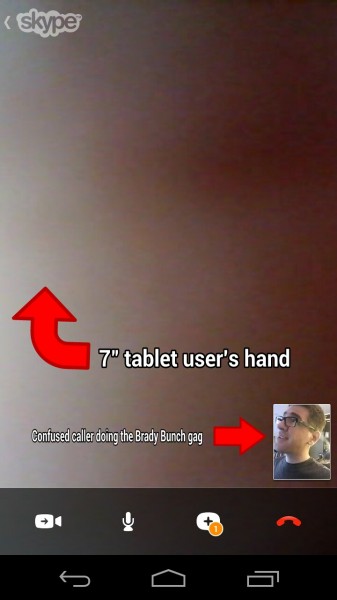 Yesterday, Skype
Yesterday, Skype 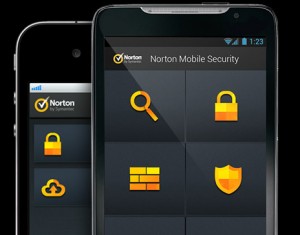



 DataViz Inc. on Monday launched Passwords Plus on the Android Platform, making Android the fourth platform for the password management software behind Windows, Mac OS, and iOS.
DataViz Inc. on Monday launched Passwords Plus on the Android Platform, making Android the fourth platform for the password management software behind Windows, Mac OS, and iOS. Networking leader Cisco announced on Sunday evening its intent to acquire San Francisco-based cloud networking company Meraki Inc. Cisco will pay approximately $1.2 billion in cash and incentives to acquire Meraki, and the deal is expected to close in the second quarter of 2013.
Networking leader Cisco announced on Sunday evening its intent to acquire San Francisco-based cloud networking company Meraki Inc. Cisco will pay approximately $1.2 billion in cash and incentives to acquire Meraki, and the deal is expected to close in the second quarter of 2013. This week was big for consumer cloud storage services,
This week was big for consumer cloud storage services,  Enterprise content management application Seismic launched in the Windows 8 app store today, bringing Microsoft's new operating system its cloud-based method of managing branded marketing and sales materials in a single, touchable interface.
Enterprise content management application Seismic launched in the Windows 8 app store today, bringing Microsoft's new operating system its cloud-based method of managing branded marketing and sales materials in a single, touchable interface.


 Microsoft's premier VoIP, chat, and video call software Skype has received updates across the board for the
Microsoft's premier VoIP, chat, and video call software Skype has received updates across the board for the 









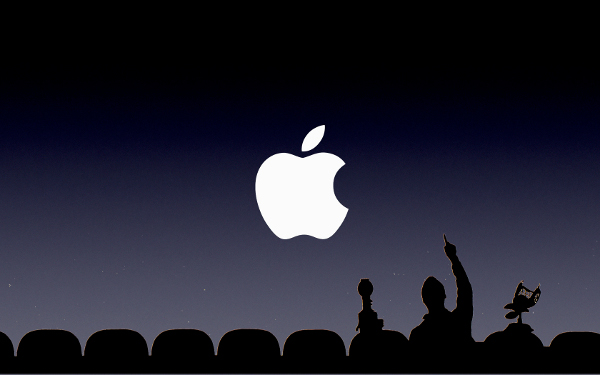






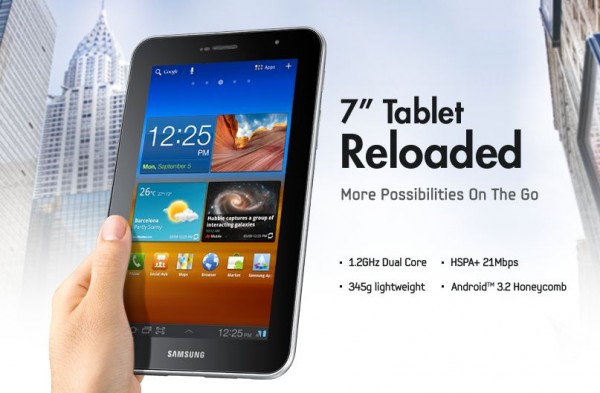 Galaxy Tab 7.0 Plus: "7" Tablet, Reloaded" ...Unfortunately, it was reloaded with Honeycomb. Could also be replaced with slogan: 7" Tablet, Endlessly Reloading.
Galaxy Tab 7.0 Plus: "7" Tablet, Reloaded" ...Unfortunately, it was reloaded with Honeycomb. Could also be replaced with slogan: 7" Tablet, Endlessly Reloading. Lenovo IdeaPad A1: "Have a Little Fun" ...We can't promise you a moderate amount of fun, so you will have to settle for a little.
Lenovo IdeaPad A1: "Have a Little Fun" ...We can't promise you a moderate amount of fun, so you will have to settle for a little. "Galaxy Tab: Have it all, Anywhere." (...Anywhere except countries where we're banned for copying Apple.)
"Galaxy Tab: Have it all, Anywhere." (...Anywhere except countries where we're banned for copying Apple.)

 Realtime automobile traffic data service Inrix on Monday released a major update to its freemium
Realtime automobile traffic data service Inrix on Monday released a major update to its freemium 
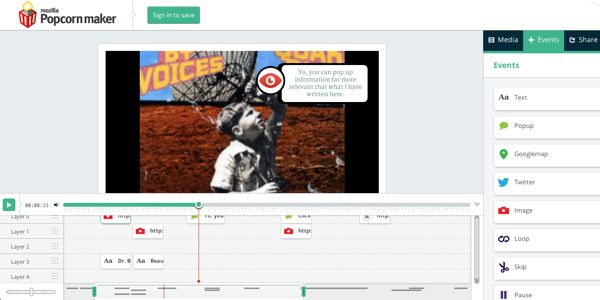


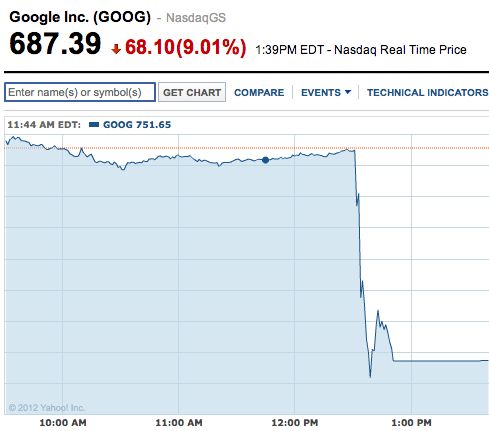






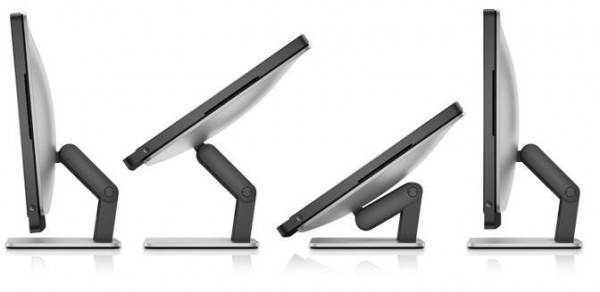

 The two all-in-ones provide slightly different variations on the same desktop PC theme. The Inspiron One 23 has a 23" screen (1920x1080) and can be configured with a 2.9 GHz Intel Pentium processor G645 or a 3rd Generation Core i7-3770s processor up to 3.90 GHz and storage is just a hair under a terabyte (1000 GB) with a 7200 RPM SATA HDD. There are two USB 3.0 ports and one USB 2.0, RJ-45 10/100/1000 Gigabit, and also has VGA, HDMI, and Composite ports. The Inspiron One 23 comes in five configurations costing
The two all-in-ones provide slightly different variations on the same desktop PC theme. The Inspiron One 23 has a 23" screen (1920x1080) and can be configured with a 2.9 GHz Intel Pentium processor G645 or a 3rd Generation Core i7-3770s processor up to 3.90 GHz and storage is just a hair under a terabyte (1000 GB) with a 7200 RPM SATA HDD. There are two USB 3.0 ports and one USB 2.0, RJ-45 10/100/1000 Gigabit, and also has VGA, HDMI, and Composite ports. The Inspiron One 23 comes in five configurations costing 




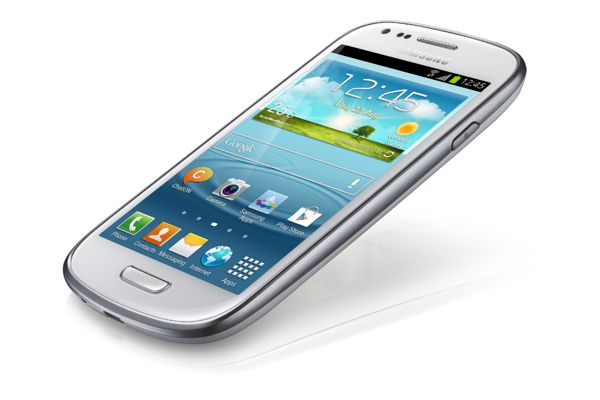




 Book retailer Barnes and Noble announced on Thursday that its partnership with Microsoft in a new limited liability company called Nook Media LLC is complete and ready to go ahead of Windows 8's launch.
Book retailer Barnes and Noble announced on Thursday that its partnership with Microsoft in a new limited liability company called Nook Media LLC is complete and ready to go ahead of Windows 8's launch. Software company Intuit on Wednesday announced Quicken 2013, the latest version of its long-running financial management software, will have mobile companion editions for iPhone, iPad, iPod touch, Android smartphones and tablets, and the Kindle Fire. The application gives users mobile access to their checking, savings and credit card account information, budgeting and expense management information, and projection data.
Software company Intuit on Wednesday announced Quicken 2013, the latest version of its long-running financial management software, will have mobile companion editions for iPhone, iPad, iPod touch, Android smartphones and tablets, and the Kindle Fire. The application gives users mobile access to their checking, savings and credit card account information, budgeting and expense management information, and projection data.

 With few growth opportunities for its T-Mobile USA wireless network, Deutsche Telekom is reportedly in talks to merge with the nation's fifth largest wireless carrier, MetroPCS.
With few growth opportunities for its T-Mobile USA wireless network, Deutsche Telekom is reportedly in talks to merge with the nation's fifth largest wireless carrier, MetroPCS.










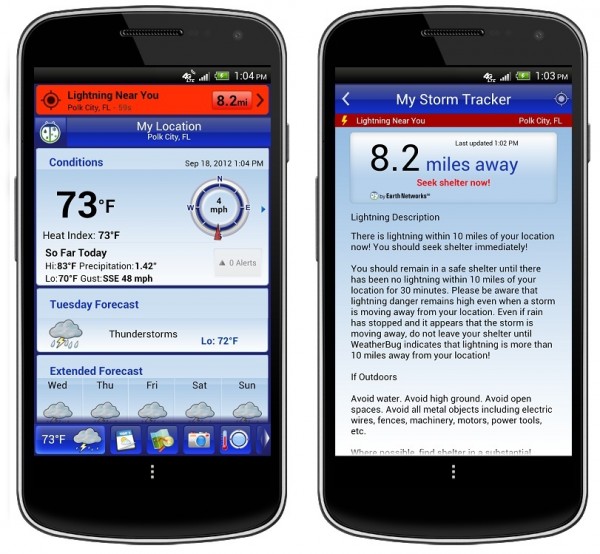














 As you can see from this side-by-side comparison, the photo-positive scan has much richer colors than the smartphone negative scan. It almost looks like an artificial aging filter was added. So if you happen across a pile of old photo negatives that you don't want to pay to process, you can absolutely use your smartphone to create positives, but without the benefit of knowing how the colors were supposed to be reproduced, your final result might not look as good as an actual print would.
As you can see from this side-by-side comparison, the photo-positive scan has much richer colors than the smartphone negative scan. It almost looks like an artificial aging filter was added. So if you happen across a pile of old photo negatives that you don't want to pay to process, you can absolutely use your smartphone to create positives, but without the benefit of knowing how the colors were supposed to be reproduced, your final result might not look as good as an actual print would. 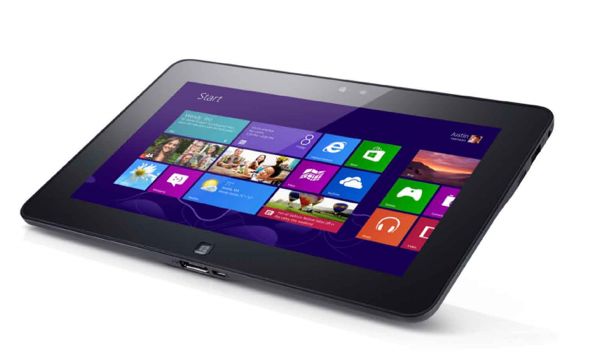








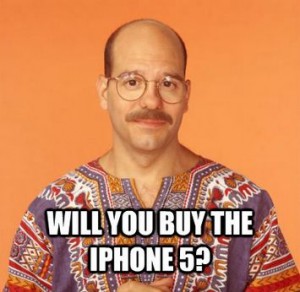



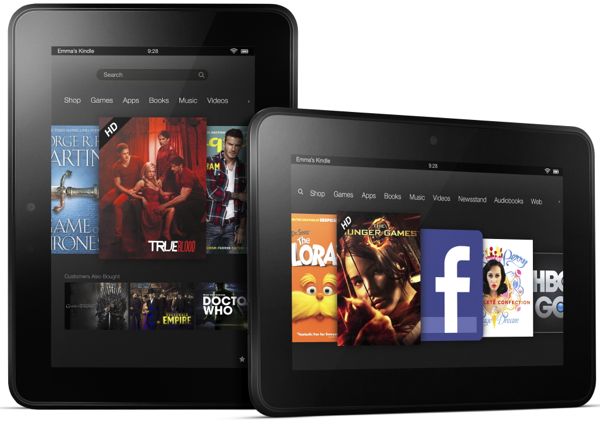
 Amazon also debuted a whole new form factor with the 8.9" (1920 x 1200 - 254ppi) Kindle Fire HD. This carries just about the same feature set as the seven inch model, but comes in 16 GB, 32 GB, or 64 GB storage configurations.
Amazon also debuted a whole new form factor with the 8.9" (1920 x 1200 - 254ppi) Kindle Fire HD. This carries just about the same feature set as the seven inch model, but comes in 16 GB, 32 GB, or 64 GB storage configurations.


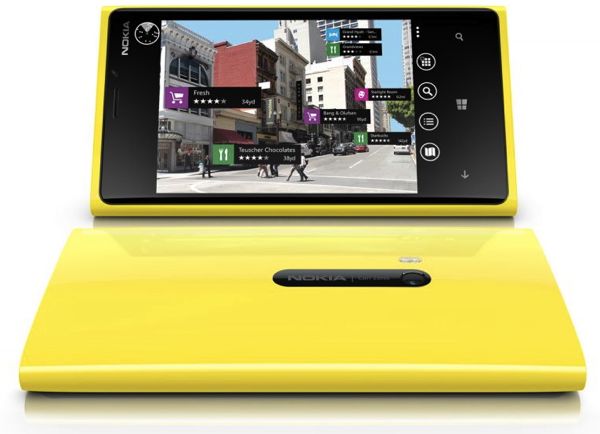







 In case you haven't already noticed, it's the quadrennial presidential election season in the United States; the time when the two dominant political parties state their goals and methods of attaining them, and work to put their chosen party leader into the office of President of the United States.
In case you haven't already noticed, it's the quadrennial presidential election season in the United States; the time when the two dominant political parties state their goals and methods of attaining them, and work to put their chosen party leader into the office of President of the United States.


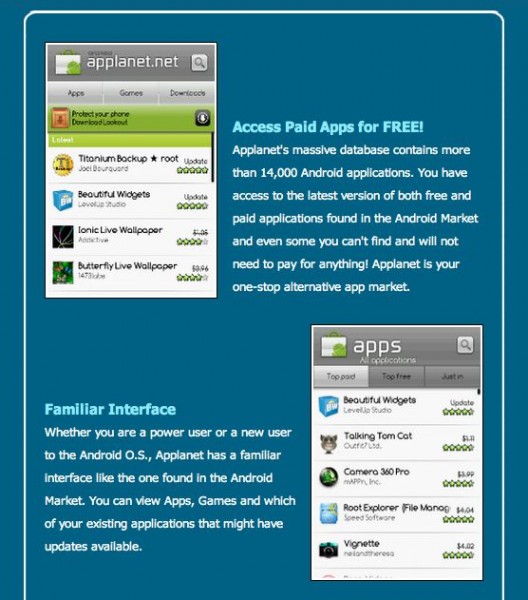

















 Cloud-based customer service startup Freshdesk on Tuesday announced the availability of the HTML5-based mobile app version of its helpdesk solution called FreshMobile. Like Salesforce's recently launched
Cloud-based customer service startup Freshdesk on Tuesday announced the availability of the HTML5-based mobile app version of its helpdesk solution called FreshMobile. Like Salesforce's recently launched 



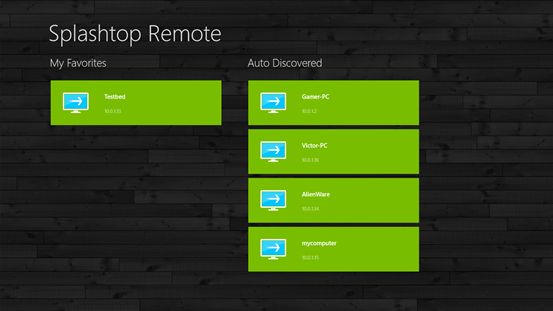












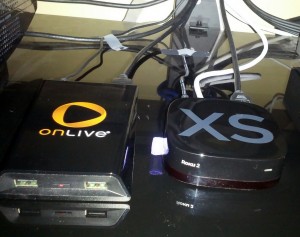

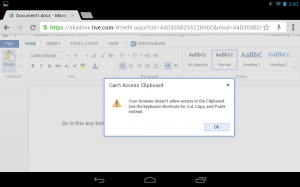

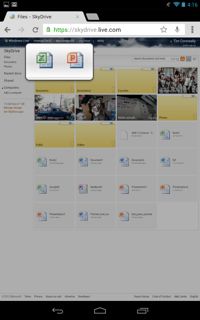


 Tuesday, Google rolled out a small update for Google Maps for Android that adds detailed indoor maps of more than twenty different U.S. museums, including the de Young Museum in San Francisco, the Philadelphia Museum of Art, Cincinnati Museum Center, the Indianapolis Museum of Art, the American Museum of Natural History, 17 different Smithsonian museums, and even the National Zoo in Washington D.C.
Tuesday, Google rolled out a small update for Google Maps for Android that adds detailed indoor maps of more than twenty different U.S. museums, including the de Young Museum in San Francisco, the Philadelphia Museum of Art, Cincinnati Museum Center, the Indianapolis Museum of Art, the American Museum of Natural History, 17 different Smithsonian museums, and even the National Zoo in Washington D.C.


 Today, the U.S. Federal Circuit Court of Appeals announced
Today, the U.S. Federal Circuit Court of Appeals announced 

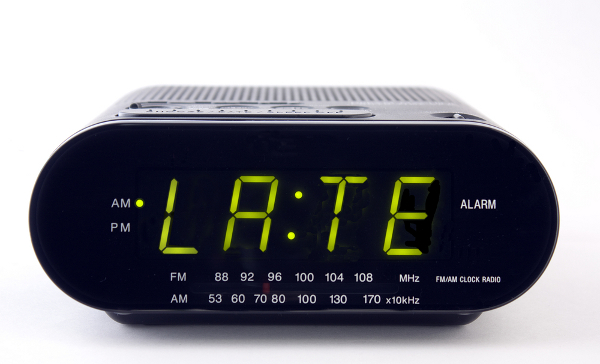
 Last week, the Wi-Fi Alliance announced a certification program that assures devices will be able to seamlessly hand off their mobile data connection to a Wi-Fi connection and vice-versa. This program is called Wi-Fi certified Passpoint, and it was defined by service providers who desperately need a way to ease traffic on their congested mobile broadband networks. With devices that can automatically pair and connect over Wi-Fi, mobile networks can spare themselves some traffic.
Last week, the Wi-Fi Alliance announced a certification program that assures devices will be able to seamlessly hand off their mobile data connection to a Wi-Fi connection and vice-versa. This program is called Wi-Fi certified Passpoint, and it was defined by service providers who desperately need a way to ease traffic on their congested mobile broadband networks. With devices that can automatically pair and connect over Wi-Fi, mobile networks can spare themselves some traffic.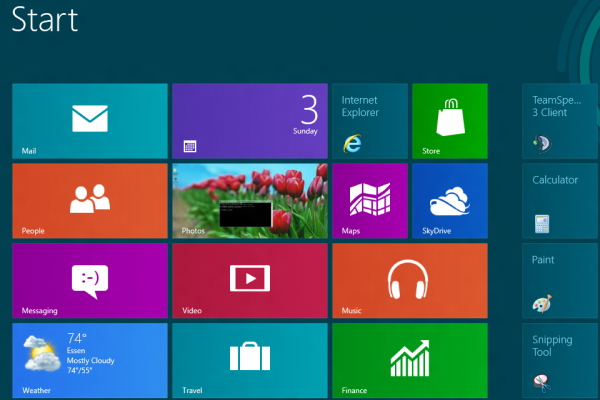
 Cisco's new Connect Cloud service is supposed to provide browser-based and remote network management features to users of some of its "Smart Wi-Fi" consumer routers. It's a pretty promising free set of features, and should impress anyone who likes to keep a close eye on their home wireless network with products like Spiceworks or Nmap. It includes such features as parental controls, media prioritization, and device management, and users can access it while at home or remotely via their mobile device.
Cisco's new Connect Cloud service is supposed to provide browser-based and remote network management features to users of some of its "Smart Wi-Fi" consumer routers. It's a pretty promising free set of features, and should impress anyone who likes to keep a close eye on their home wireless network with products like Spiceworks or Nmap. It includes such features as parental controls, media prioritization, and device management, and users can access it while at home or remotely via their mobile device. 








 But beyond the social networking aspect of Hometalk, the site includes a "professionals" section where users connect with local contractors, to hire them for jobs, or simply to ask for advice and opinions. Though it lacks the review and quality control aspect that Angie's List was designed to have, it does provide a free method of communicating directly with home improvement specialists in a place where they can actually build their reputation in front of everyone.
But beyond the social networking aspect of Hometalk, the site includes a "professionals" section where users connect with local contractors, to hire them for jobs, or simply to ask for advice and opinions. Though it lacks the review and quality control aspect that Angie's List was designed to have, it does provide a free method of communicating directly with home improvement specialists in a place where they can actually build their reputation in front of everyone. 







 Last year, when Microsoft announced it was partnering with Nokia in Windows Phone development,
Last year, when Microsoft announced it was partnering with Nokia in Windows Phone development, 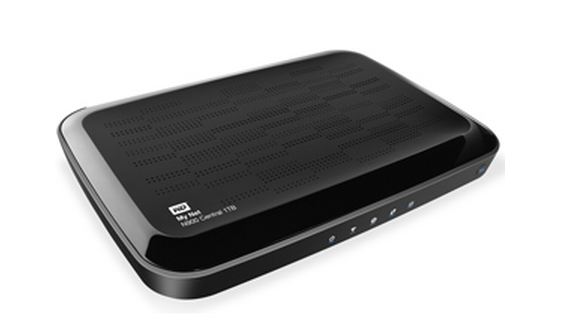



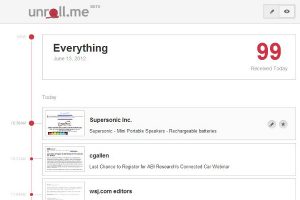 Email newsletters are about a half of a step above spam. If you purchase something online, install some piece of software, or sign up for some service and thoughtlessly breeze past the checkbox that says "Keep me informed about (product)!" you can very easily find yourself getting monthly, weekly, or in the case of the most egregious mailers (like Bed, Bath, and Beyond or Victoria's Secret) daily newsletters or circulars, and those things add up quickly.
Email newsletters are about a half of a step above spam. If you purchase something online, install some piece of software, or sign up for some service and thoughtlessly breeze past the checkbox that says "Keep me informed about (product)!" you can very easily find yourself getting monthly, weekly, or in the case of the most egregious mailers (like Bed, Bath, and Beyond or Victoria's Secret) daily newsletters or circulars, and those things add up quickly.
 Security software company AVG has taken an active role in providing
Security software company AVG has taken an active role in providing  Amazon Cloud Player, a service that lets Amazon users stream their cloud-stored music collection to their mobile device over a regular data connection, has been
Amazon Cloud Player, a service that lets Amazon users stream their cloud-stored music collection to their mobile device over a regular data connection, has been 

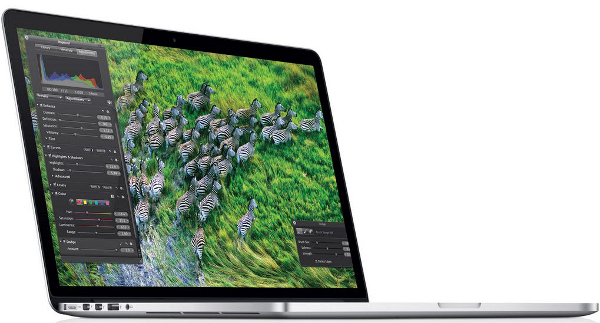




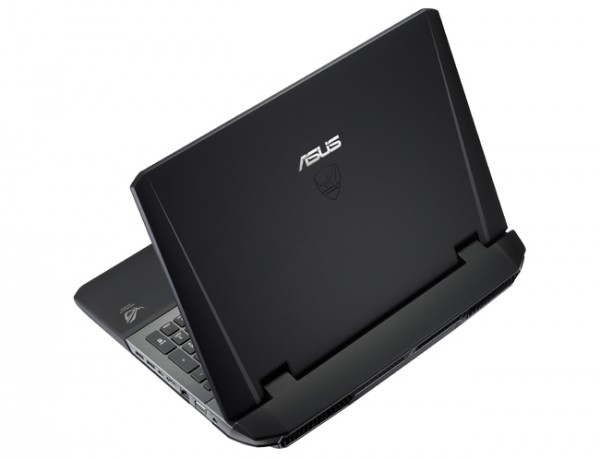




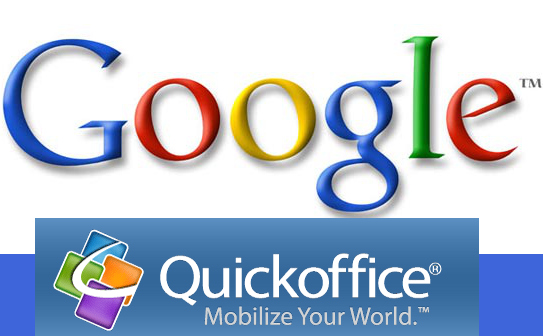
 Toshiba USA on Tuesday announced a small selection of next-generation Windows machines, including a new ultrabook in the Satellite family, a convertible Windows 8 notebook designed in conjunction with Intel, and pair of mobile devices running Windows RT.
Toshiba USA on Tuesday announced a small selection of next-generation Windows machines, including a new ultrabook in the Satellite family, a convertible Windows 8 notebook designed in conjunction with Intel, and pair of mobile devices running Windows RT.



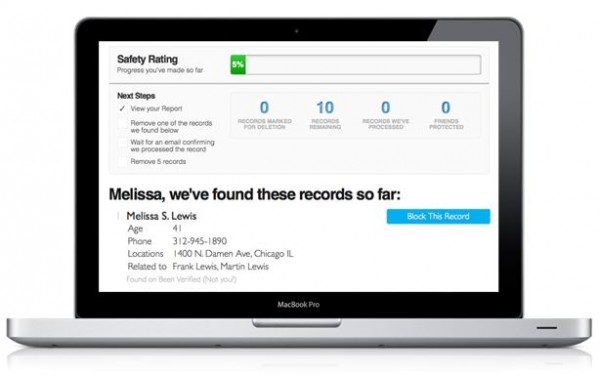





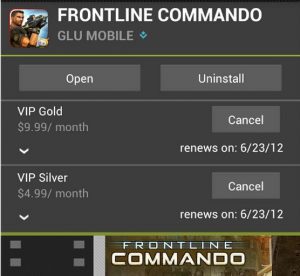

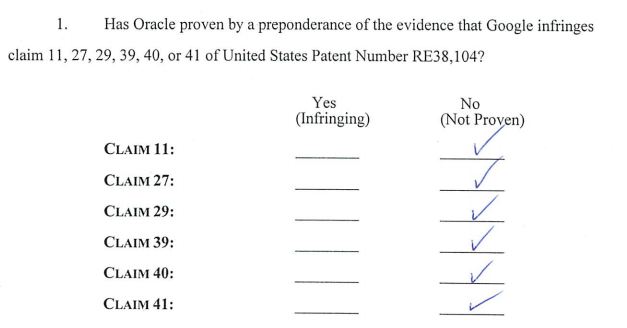
 American storage company Seagate announced on Wednesday its intention to become majority owner of French storage company
American storage company Seagate announced on Wednesday its intention to become majority owner of French storage company 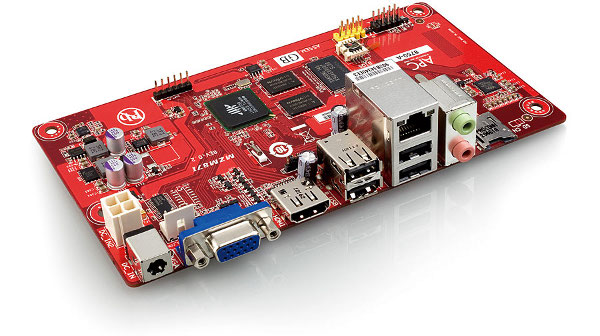


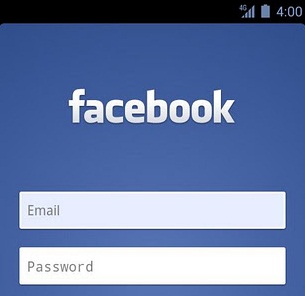 Today is Facebook Day, the day when the most-successful-social-network-so-far opened up to public investment and outshone all other American IPOs up to this point.
Today is Facebook Day, the day when the most-successful-social-network-so-far opened up to public investment and outshone all other American IPOs up to this point. 








 In the three months ending on March 31, 2012, there were more than 300 million photos uploaded to Facebook every single day. Not only is it a staggering amount of content to organize, but it is also a huge stockpile of graphical data that can actually be put to use.
In the three months ending on March 31, 2012, there were more than 300 million photos uploaded to Facebook every single day. Not only is it a staggering amount of content to organize, but it is also a huge stockpile of graphical data that can actually be put to use.

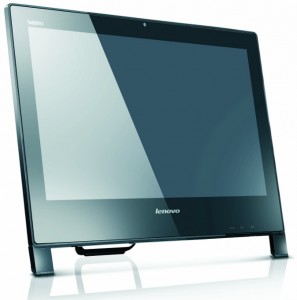


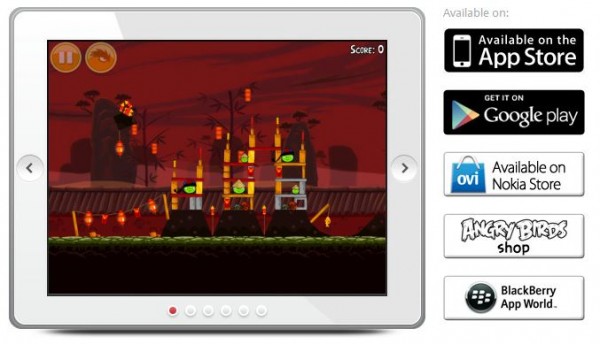


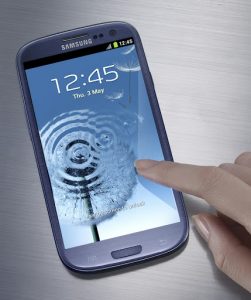 Leading Android smartphone maker Samsung on Thursday announced the latest installment in its
Leading Android smartphone maker Samsung on Thursday announced the latest installment in its 
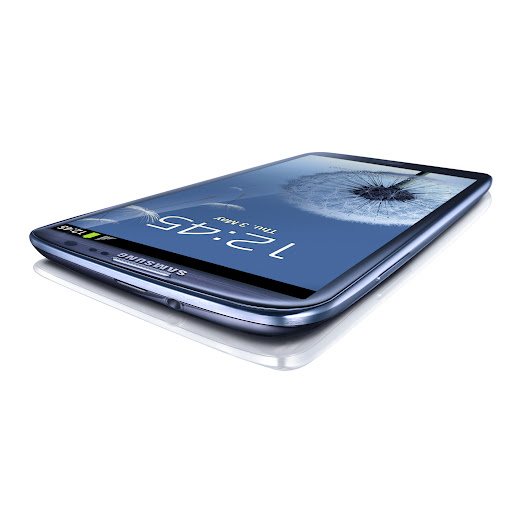
 In a blog post on Wednesday, President of Microsoft's Windows division Steven Sinofsky
In a blog post on Wednesday, President of Microsoft's Windows division Steven Sinofsky 

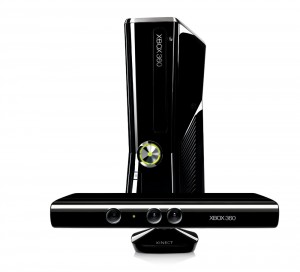


























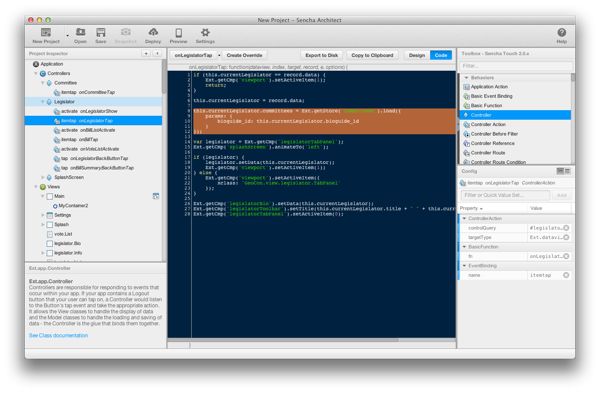

















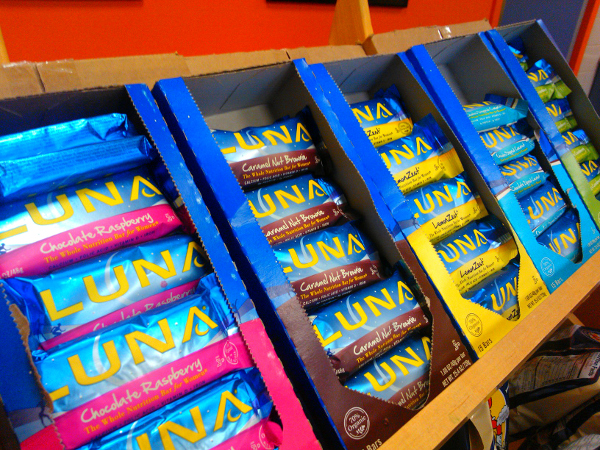



 Windows Phone is smooth and responsive-- Here is where we encounter the Lumia's contentious bone. Maybe you don't like the Windows Phone interface, maybe you do. I can certainly agree with complaints that the Metro UI has received, at least in terms of utilization of screen real estate, customization, and overall aesthetic. However, it runs smoothly and is instantly responsive to touch, it is easily navigable, and there isn't the action lag you sometimes get with cheaper smartphones. I do find myself wishing that this phone came with an Android option, but that's just my personal bias. For the mainstream consumer and first-time smartphone user, the Windows Phone experience is going to impress on this device...it just needs a few more amazing platform-defining applications to mitigate user complaint. One has to wonder how differently Windows Phone would be perceived today if it had launched with a device like the Lumia 900 back in 2010
Windows Phone is smooth and responsive-- Here is where we encounter the Lumia's contentious bone. Maybe you don't like the Windows Phone interface, maybe you do. I can certainly agree with complaints that the Metro UI has received, at least in terms of utilization of screen real estate, customization, and overall aesthetic. However, it runs smoothly and is instantly responsive to touch, it is easily navigable, and there isn't the action lag you sometimes get with cheaper smartphones. I do find myself wishing that this phone came with an Android option, but that's just my personal bias. For the mainstream consumer and first-time smartphone user, the Windows Phone experience is going to impress on this device...it just needs a few more amazing platform-defining applications to mitigate user complaint. One has to wonder how differently Windows Phone would be perceived today if it had launched with a device like the Lumia 900 back in 2010 



 But unlike Groupon, which tries to grab as many low-value users it can at a time, FoundersCard's user base is small and high value. It currently has only about 5,500 members, but the average net worth of each member is $1.7 million. It is this high value that attracts the partner businesses, not the promise of a short-term burst of cash.
But unlike Groupon, which tries to grab as many low-value users it can at a time, FoundersCard's user base is small and high value. It currently has only about 5,500 members, but the average net worth of each member is $1.7 million. It is this high value that attracts the partner businesses, not the promise of a short-term burst of cash.



















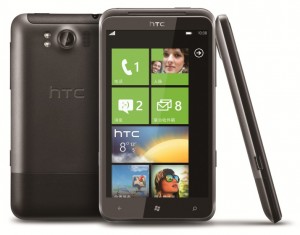
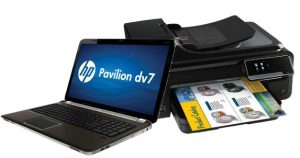





 Leading Web retailer Amazon.com has declared the Ides of March to be the beginning of its Android App Store's anniversary. The app store launched
Leading Web retailer Amazon.com has declared the Ides of March to be the beginning of its Android App Store's anniversary. The app store launched 
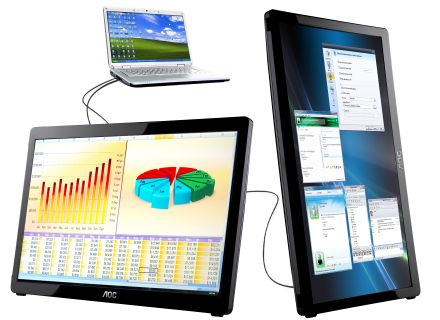



 There are
There are 











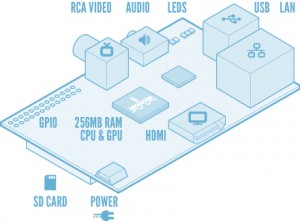



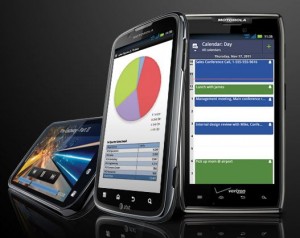



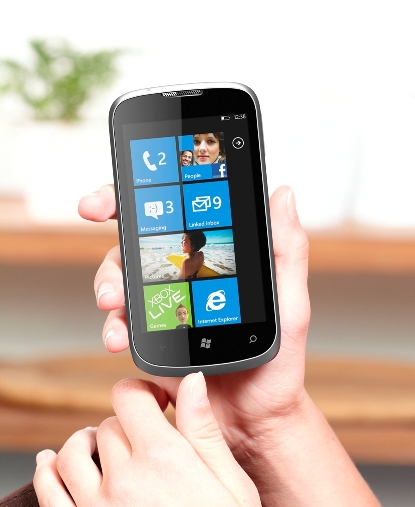


 On Friday, I talked about ZTE's
On Friday, I talked about ZTE's 

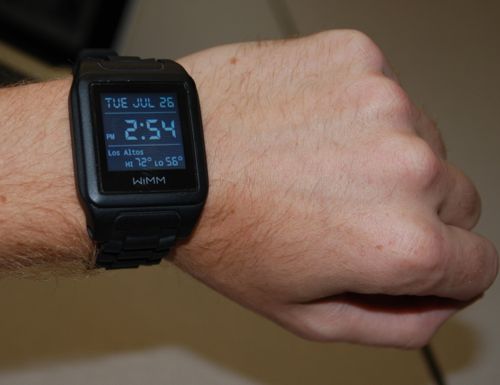




 Next week, at the GSMA Mobile World Congress, Mozilla will be launching its own app store for HTML5 web apps, called the Mozilla Marketplace, much like Google did with the Chrome app store that launched worldwide
Next week, at the GSMA Mobile World Congress, Mozilla will be launching its own app store for HTML5 web apps, called the Mozilla Marketplace, much like Google did with the Chrome app store that launched worldwide 
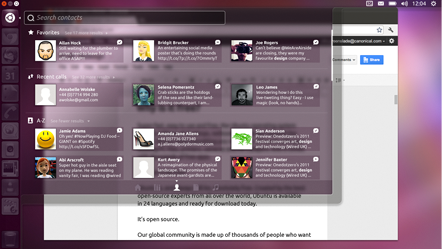






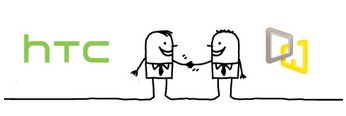



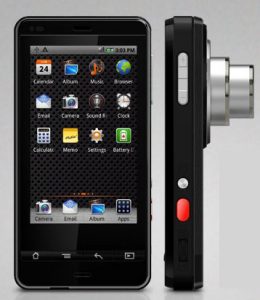

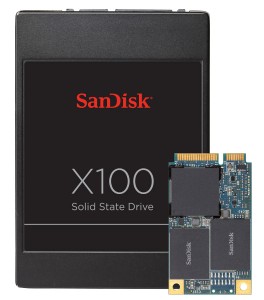











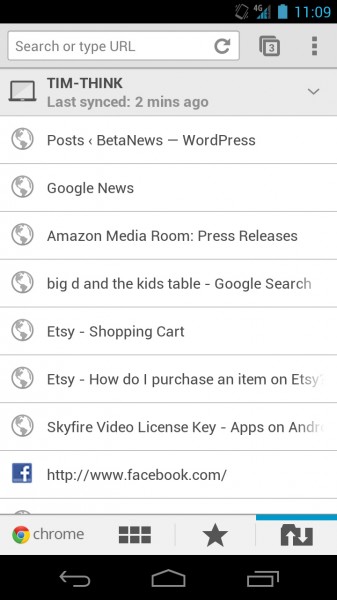








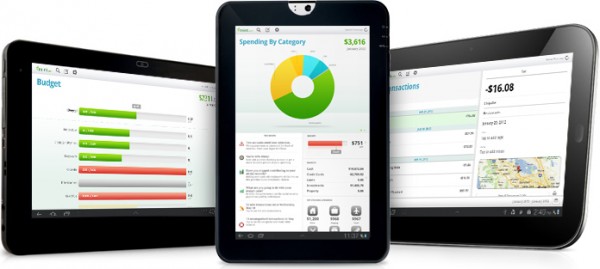






 World-famous microblogging service Twitter has changed its policies and will "reactively withhold" (read: censor) tweets deemed illegal or harmful in countries with laws concerning such things.
World-famous microblogging service Twitter has changed its policies and will "reactively withhold" (read: censor) tweets deemed illegal or harmful in countries with laws concerning such things.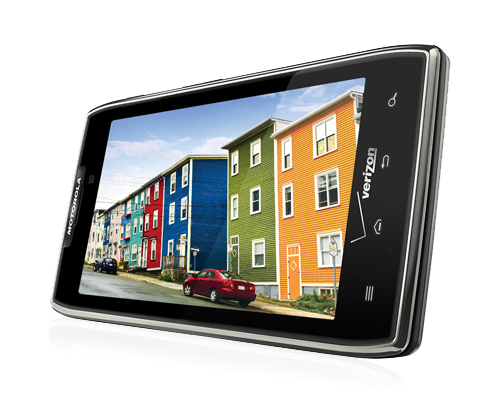



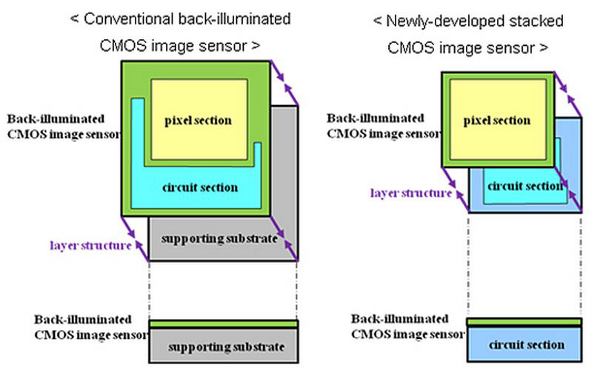



 As the internet pats itself on the back for protesting SOPA and changing the minds of a handful of U.S. Senators, file-sharing site Megaupload has been brought down in one of the largest copyright infringement cases of all time.
As the internet pats itself on the back for protesting SOPA and changing the minds of a handful of U.S. Senators, file-sharing site Megaupload has been brought down in one of the largest copyright infringement cases of all time. 
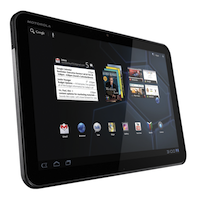




























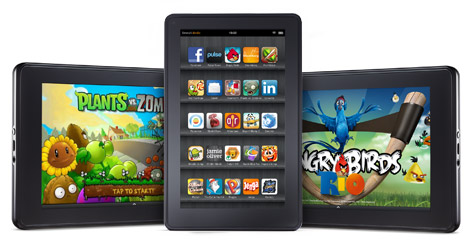






 Hewlett-Packard announced on Friday that it is turning webOS software over to the open source community while still remaining a participant and investor in the project.
Hewlett-Packard announced on Friday that it is turning webOS software over to the open source community while still remaining a participant and investor in the project. 






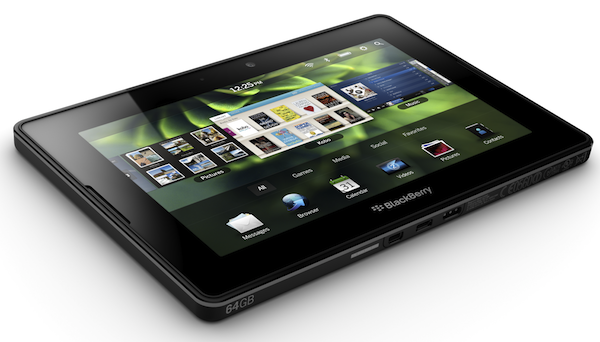

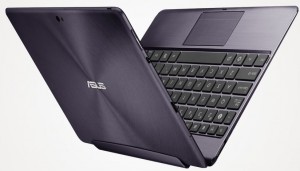


 Leading social networking service Facebook has agreed to settle with the Federal Trade Commission (FTC) on charges that its privacy settings were deceptive to customers, and that it made privacy promises that it didn't keep.
Leading social networking service Facebook has agreed to settle with the Federal Trade Commission (FTC) on charges that its privacy settings were deceptive to customers, and that it made privacy promises that it didn't keep.




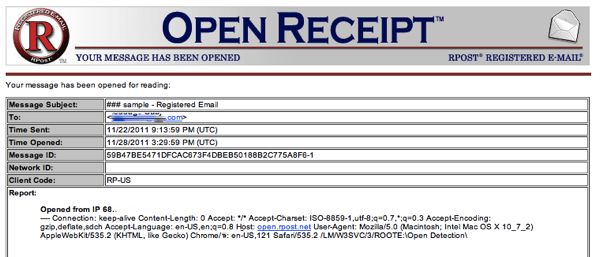


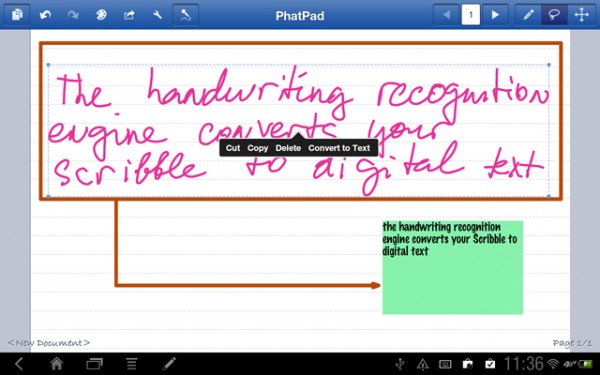

 Federal Communications Commission (FCC) chairman Julius Genachowski on Tuesday put forth an order for a hearing to re-examine the proposed merger between national wireless carriers AT&T and T-Mobile. If approved, the hearing would have to take place after the Justice Department submits the merger to an antitrust trial, and could delay the merger by a few more years.
Federal Communications Commission (FCC) chairman Julius Genachowski on Tuesday put forth an order for a hearing to re-examine the proposed merger between national wireless carriers AT&T and T-Mobile. If approved, the hearing would have to take place after the Justice Department submits the merger to an antitrust trial, and could delay the merger by a few more years.
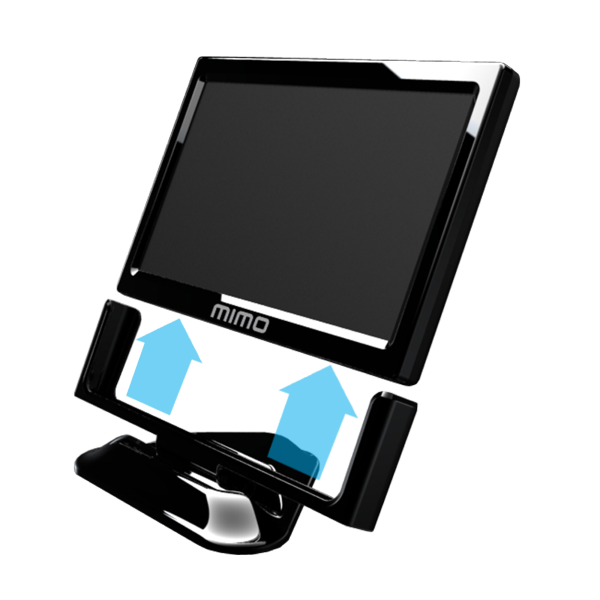















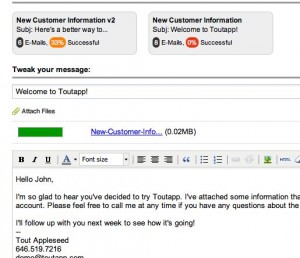








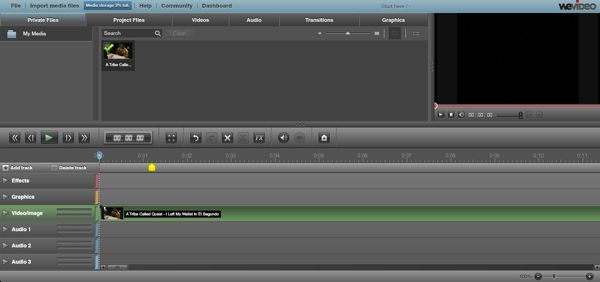
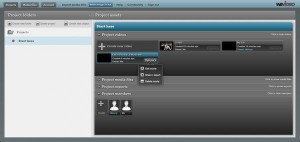





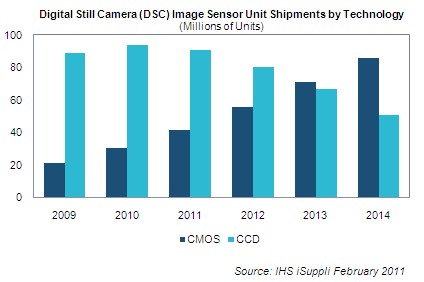







 To keep up with the shifting tide of video game distribution and the increasing popularity of mobile tablets and smartphones as video game systems, brick-and-mortar video game retailer GameStop was
To keep up with the shifting tide of video game distribution and the increasing popularity of mobile tablets and smartphones as video game systems, brick-and-mortar video game retailer GameStop was 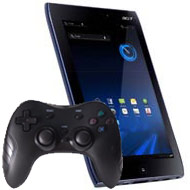

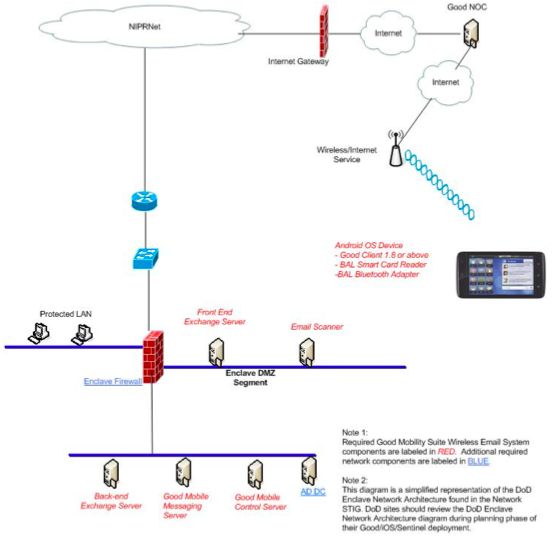








 Hewlett-Packard on Thursday announced it will not spin off its Personal Systems group. For the last month, the company has been looking at possible "alternatives" for the PSG -better known as the consumer computer portion of HP that leads the global market- and one of the options the company discussed was turning it into a separate company, akin to what IBM did when it sold off its PC division to Lenovo more than five years ago.
Hewlett-Packard on Thursday announced it will not spin off its Personal Systems group. For the last month, the company has been looking at possible "alternatives" for the PSG -better known as the consumer computer portion of HP that leads the global market- and one of the options the company discussed was turning it into a separate company, akin to what IBM did when it sold off its PC division to Lenovo more than five years ago.
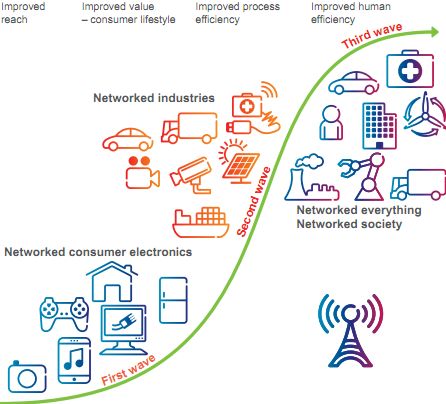


















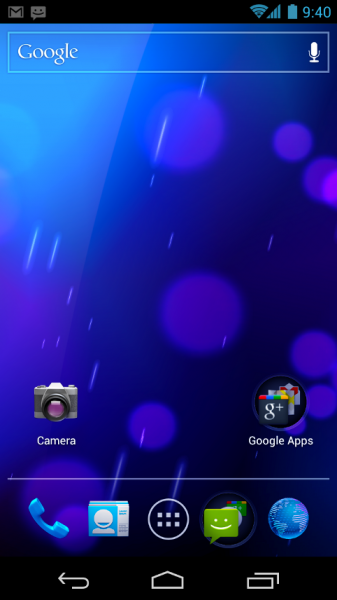








 At the ACM Symposium on User Interface Software and Technology
At the ACM Symposium on User Interface Software and Technology 





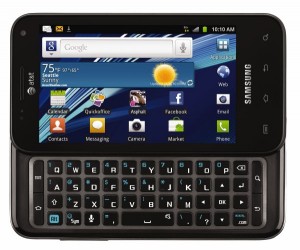
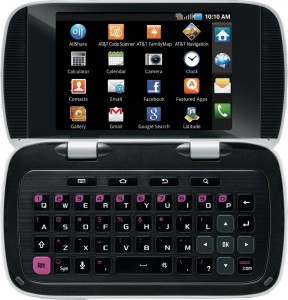




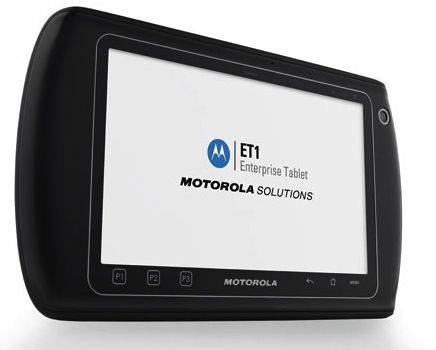














 At the close of Elements 2011, Intel's developer conference aimed at the AppUp app store community, AppUp GM Peter Biddle announced that Intel has acquired Israeli navigation and location services provider
At the close of Elements 2011, Intel's developer conference aimed at the AppUp app store community, AppUp GM Peter Biddle announced that Intel has acquired Israeli navigation and location services provider  At Samsung's Mobile Solutions Forum 2011 in Taiwan, the South Korean consumer electronics leader revealed some major new components that it will use in its next generation of smartphones and mobile tablets: a new dual-core applications processor, and a new 16 Megapixel CMOS sensor and new forward-facing camera sensor, a new 64 GB flash memory module. and a new 4 Gigabit low power DDR3 DRAM memory unit.
At Samsung's Mobile Solutions Forum 2011 in Taiwan, the South Korean consumer electronics leader revealed some major new components that it will use in its next generation of smartphones and mobile tablets: a new dual-core applications processor, and a new 16 Megapixel CMOS sensor and new forward-facing camera sensor, a new 64 GB flash memory module. and a new 4 Gigabit low power DDR3 DRAM memory unit.









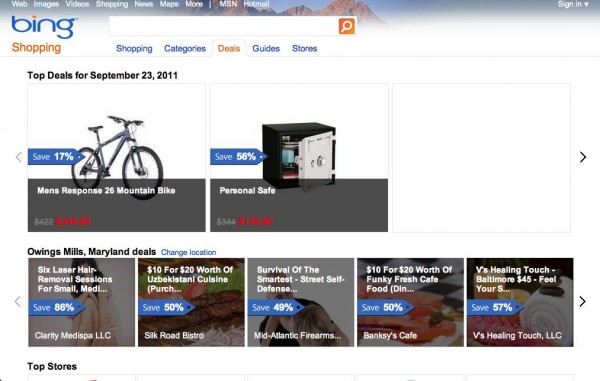





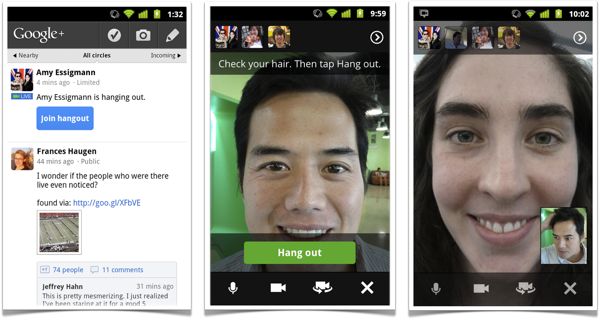

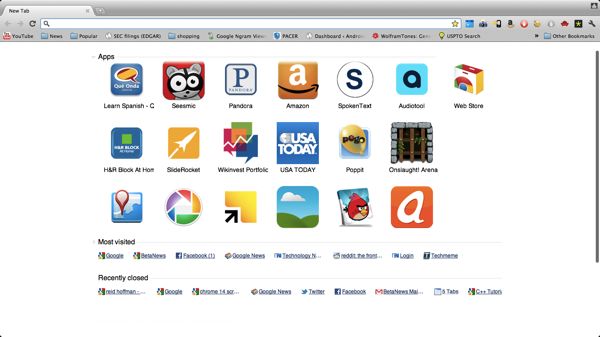


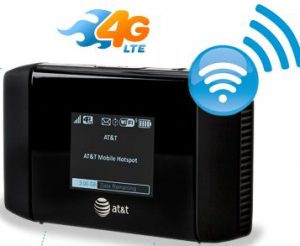






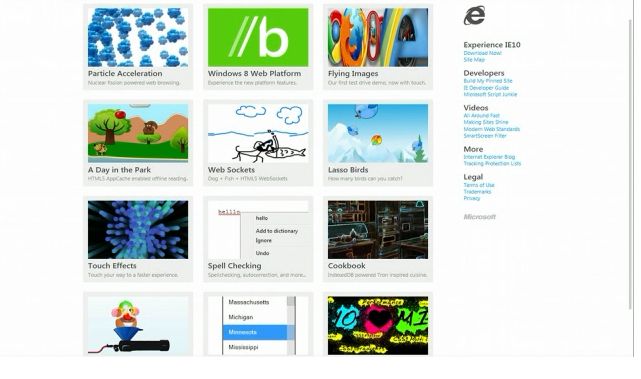
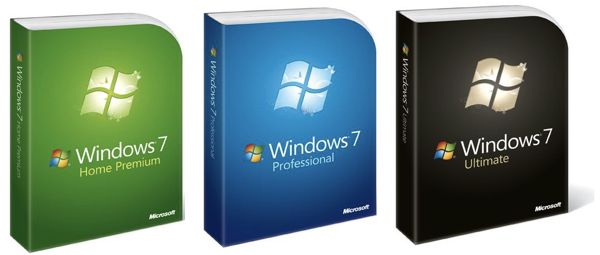









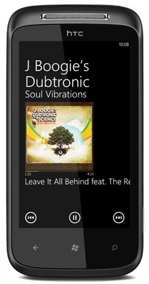













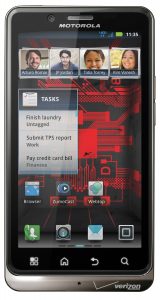




 On the last day of August, the U.S. Department of Justice filed an antitrust lawsuit in the District of Columbia to block the proposed merger of national wireless network operators AT&T and T-Mobile. Tuesday, competing national carrier Sprint Nextel announced it had filed a similar antitrust suit in federal court, saying the $39 billion merger is, in short, illegal.
On the last day of August, the U.S. Department of Justice filed an antitrust lawsuit in the District of Columbia to block the proposed merger of national wireless network operators AT&T and T-Mobile. Tuesday, competing national carrier Sprint Nextel announced it had filed a similar antitrust suit in federal court, saying the $39 billion merger is, in short, illegal.




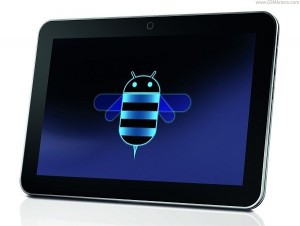




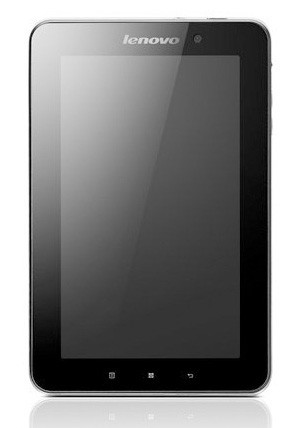

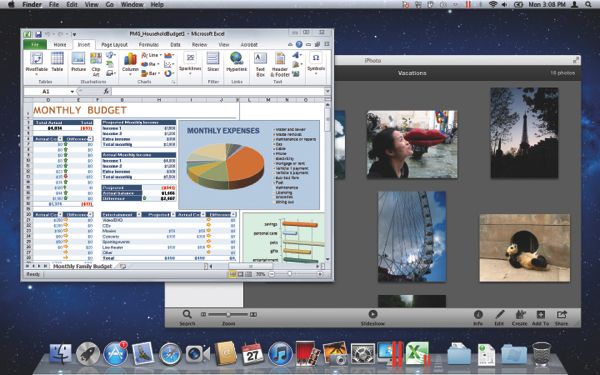

 "The combination of AT&T and T-Mobile would result in tens of millions of consumers all across the United States facing higher prices, fewer choices and lower quality products for mobile wireless services. Consumers across the country, including those in rural areas and those with lower incomes, benefit from competition among the nation's wireless carriers, particularly the four remaining national carriers. This lawsuit seeks to ensure that everyone can continue to receive the benefits of that competition."
"The combination of AT&T and T-Mobile would result in tens of millions of consumers all across the United States facing higher prices, fewer choices and lower quality products for mobile wireless services. Consumers across the country, including those in rural areas and those with lower incomes, benefit from competition among the nation's wireless carriers, particularly the four remaining national carriers. This lawsuit seeks to ensure that everyone can continue to receive the benefits of that competition." "T-Mobile has been an important source of competition among the national carriers, including through innovation and quality enhancements such as the roll-out of the first nationwide high-speed data network. Unless this merger is blocked, competition and innovation will be reduced, and consumers will suffer."
"T-Mobile has been an important source of competition among the national carriers, including through innovation and quality enhancements such as the roll-out of the first nationwide high-speed data network. Unless this merger is blocked, competition and innovation will be reduced, and consumers will suffer."


 "We are extremely pleased but not surprised that DOJ has decided to block this anti-competitive merger. This is an extraordinary announcement – one that confirms our belief that this merger cannot be conditioned into acceptance. DOJ has been very diligent in pursuing their responsibilities and clearly recognized consolidation is detrimental to competition and would not be in the public interest. This is an enormous win for consumers across the United States.”
"We are extremely pleased but not surprised that DOJ has decided to block this anti-competitive merger. This is an extraordinary announcement – one that confirms our belief that this merger cannot be conditioned into acceptance. DOJ has been very diligent in pursuing their responsibilities and clearly recognized consolidation is detrimental to competition and would not be in the public interest. This is an enormous win for consumers across the United States.”

 "A combined AT&T/T-Mobile would harm consumers by reducing competition and by raising barriers to entry for potential new entrants like DISH Network. DISH Network believes its own efforts in seeking to enter the wireless broadband market will drive job creation and further stimulate competition and innovation."
"A combined AT&T/T-Mobile would harm consumers by reducing competition and by raising barriers to entry for potential new entrants like DISH Network. DISH Network believes its own efforts in seeking to enter the wireless broadband market will drive job creation and further stimulate competition and innovation."



 Users of some of Google's SSL-encrypted services in Iran were the subject of man-in-the-middle attacks earlier this week, the search giant
Users of some of Google's SSL-encrypted services in Iran were the subject of man-in-the-middle attacks earlier this week, the search giant  Last week, we heard a report that CNET's Download.com had recently
Last week, we heard a report that CNET's Download.com had recently 

 After steadily gaining popularity among professionals and receiving a
After steadily gaining popularity among professionals and receiving a 




 Earlier this week, the state of Virginia experienced the largest earthquake it had felt since 1944, and the entire Northeastern region of the U.S. shook. This weekend, the same region is expected to be slammed by Hurricane Irene,
Earlier this week, the state of Virginia experienced the largest earthquake it had felt since 1944, and the entire Northeastern region of the U.S. shook. This weekend, the same region is expected to be slammed by Hurricane Irene, 

 New York District Court Judge William H. Pauley, III, has determined that MP3tunes falls under the safe harbor provisions in the Digital Millenium Copyright Act (DMCA), protecting it from a four-year old copyright infringement lawsuit from record label EMI and its subsidiaries.
New York District Court Judge William H. Pauley, III, has determined that MP3tunes falls under the safe harbor provisions in the Digital Millenium Copyright Act (DMCA), protecting it from a four-year old copyright infringement lawsuit from record label EMI and its subsidiaries.


 According to market research company NPD Group, the sale of Android-based handsets grew 29% in the second quarter of this year, bringing the operating system to a 52% share of the US market. Contributing to this growth were South Korean manufacturers Samsung and LG, which both experienced "substantial gains."
According to market research company NPD Group, the sale of Android-based handsets grew 29% in the second quarter of this year, bringing the operating system to a 52% share of the US market. Contributing to this growth were South Korean manufacturers Samsung and LG, which both experienced "substantial gains."


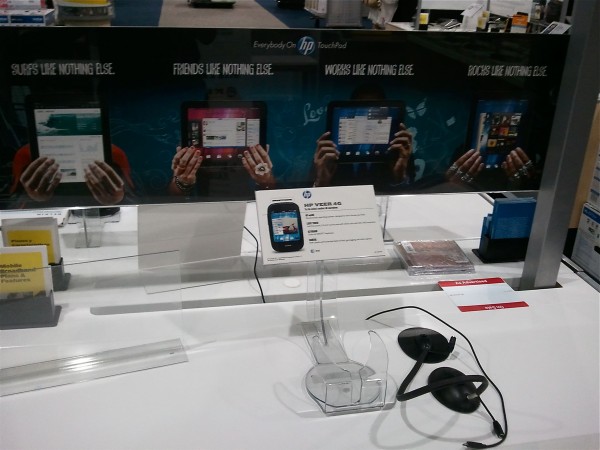



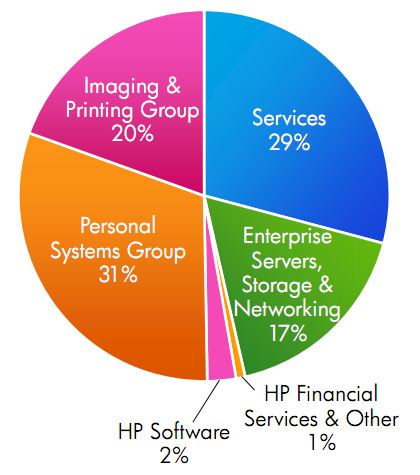



































 Last October, Apple gave the public its first look at
Last October, Apple gave the public its first look at 










 Gunnar's
Gunnar's 











 Yahoo on Thursday
Yahoo on Thursday 


 The latest in the Palm Pre line is now known as the HP Pre 3, which comes in 8GB and 16GB varieties. It's got a 3.6" display, a 1.4 GHz Qualcomm Snapdragon processor, with
The latest in the Palm Pre line is now known as the HP Pre 3, which comes in 8GB and 16GB varieties. It's got a 3.6" display, a 1.4 GHz Qualcomm Snapdragon processor, with 
 Wednesday, Mobile loyalty card app CardStar announced it has become the first app of its ilk to partner with Groupon, the extremely hot daily deal service, and users of its iPhone and Android apps in more than 160 cities will have location-specific access to Groupon deals.
Wednesday, Mobile loyalty card app CardStar announced it has become the first app of its ilk to partner with Groupon, the extremely hot daily deal service, and users of its iPhone and Android apps in more than 160 cities will have location-specific access to Groupon deals.



 Friday, the Google TV team published a couple of new
Friday, the Google TV team published a couple of new  Google on Thursday finally launched a renewed web-based Android Market that integrates with a user's Google account and lets him shop for applications and send them to the various Android-powered devices linked to the account. This new shop marks the industry-wide trend toward comprehensive device-agnostic software shopping solutions.
Google on Thursday finally launched a renewed web-based Android Market that integrates with a user's Google account and lets him shop for applications and send them to the various Android-powered devices linked to the account. This new shop marks the industry-wide trend toward comprehensive device-agnostic software shopping solutions. Thursday, AT&T and Motorola announced pricing and availability of the Motorola Atrix 4G convertible smartphone. The public first
Thursday, AT&T and Motorola announced pricing and availability of the Motorola Atrix 4G convertible smartphone. The public first 













 Google's Chief Executive officer Eric Schmidt will be stepping down from his position on April 4 of this year, and the site's co-founder Larry Page will once again assume the role of CEO.
Google's Chief Executive officer Eric Schmidt will be stepping down from his position on April 4 of this year, and the site's co-founder Larry Page will once again assume the role of CEO.

































 Innovative soft keyboard Swype has released a new beta on the Android platform, and is now accepting more beta testers.
Innovative soft keyboard Swype has released a new beta on the Android platform, and is now accepting more beta testers.

 Sundar Pichai, Vice President of Google Chrome Product Management holds one of the notebooks used in the pilot program.
Sundar Pichai, Vice President of Google Chrome Product Management holds one of the notebooks used in the pilot program.

 Microsoft on Monday announced that Kinect, the sensor attachment for the Xbox 360 that supports motion-based controls, has been sold to more than 2.5 million customers worldwide in just 25 days.
Microsoft on Monday announced that Kinect, the sensor attachment for the Xbox 360 that supports motion-based controls, has been sold to more than 2.5 million customers worldwide in just 25 days. 





















 Streaming video on demand service Vudu will be available on all forms of Boxee in November,
Streaming video on demand service Vudu will be available on all forms of Boxee in November,  For as popular as Roku's streaming set top boxes are, they have had practically zero presence in physical retail stores. That is, until a few weeks ago.
For as popular as Roku's streaming set top boxes are, they have had practically zero presence in physical retail stores. That is, until a few weeks ago.
 Tueday evening, Barnes & Noble unveiled NOOKcolor, the book retailer's second generation Android-powered e-reader. While the
Tueday evening, Barnes & Noble unveiled NOOKcolor, the book retailer's second generation Android-powered e-reader. While the 

















 Verizon Wireless and Apple today announced that the iPad will be available in 2,000 Verizon Wireless Stores on Thursday, October 28th.
Verizon Wireless and Apple today announced that the iPad will be available in 2,000 Verizon Wireless Stores on Thursday, October 28th.










 HTC HD7- 4.3" screen, 720p video, will launch with T-Mobile USA, O2 (UK, Germany,) Movistar (Spain,) and SingTel (Singapore.)
HTC HD7- 4.3" screen, 720p video, will launch with T-Mobile USA, O2 (UK, Germany,) Movistar (Spain,) and SingTel (Singapore.)  HTC 7 Surround - 3.8" screen, slide-out stereo speakers, kickstand, 5 megapixel camera with LED flash Quad-band GSM, Tri-band HSPA; will launch with AT&T (US,) and Telus (Canada.)
HTC 7 Surround - 3.8" screen, slide-out stereo speakers, kickstand, 5 megapixel camera with LED flash Quad-band GSM, Tri-band HSPA; will launch with AT&T (US,) and Telus (Canada.)  HTC Mozart - 3.7" display, Unibody aluminum design; will launch with Orange (France, UK,) Deutsche Telekom AG (Germany,) and Telstra (Australia.)
HTC Mozart - 3.7" display, Unibody aluminum design; will launch with Orange (France, UK,) Deutsche Telekom AG (Germany,) and Telstra (Australia.) HTC 7 Trophy - 3.8" screen, 5 Megapixel LED flash camera; will launch with SFR (France,) and Vodafone (Germany, Spain, UK, Australia.)
HTC 7 Trophy - 3.8" screen, 5 Megapixel LED flash camera; will launch with SFR (France,) and Vodafone (Germany, Spain, UK, Australia.) HTC 7 Pro - QWERTY slider; will launch on Sprint in the US in 2011.
HTC 7 Pro - QWERTY slider; will launch on Sprint in the US in 2011. Samsung Focus - 4" Super AMOLED; noted for being the thinnest Windows Phone 7 device at launch (9.9mm,) 5 megapixel camera, Quad-band GSM, Tri-band HSPA, will launch on AT&T in the US.
Samsung Focus - 4" Super AMOLED; noted for being the thinnest Windows Phone 7 device at launch (9.9mm,) 5 megapixel camera, Quad-band GSM, Tri-band HSPA, will launch on AT&T in the US. Samsung Omnia 7 - 4" Super AMOLED slider; will launch with Orange (France, UK,) SFR (France,) Movistar (Spain,) and Deutsche Telekom AG (Germany.)
Samsung Omnia 7 - 4" Super AMOLED slider; will launch with Orange (France, UK,) SFR (France,) Movistar (Spain,) and Deutsche Telekom AG (Germany.) LG Quantum - 3.5" QWERTY slider; 5 megapixel autofocus camera, Quad-band GSM, Tri-band HSPA; will launch with AT&T in the United States.
LG Quantum - 3.5" QWERTY slider; 5 megapixel autofocus camera, Quad-band GSM, Tri-band HSPA; will launch with AT&T in the United States. LG Optimus 7 - 3.8"; will launch with Telus (Canada,) America Movil (Mexico,) Movistar (Spain,) Vodafone (Germany, Italy, Spain, UK,) SingTel (Singapore,) and Telstra (Australia.)
LG Optimus 7 - 3.8"; will launch with Telus (Canada,) America Movil (Mexico,) Movistar (Spain,) Vodafone (Germany, Italy, Spain, UK,) SingTel (Singapore,) and Telstra (Australia.)  Dell Venue Pro - 4.1" QWERTY portrait slider; will launch on T-Mobile USA.
Dell Venue Pro - 4.1" QWERTY portrait slider; will launch on T-Mobile USA. Just days before the October 11th deadline, the United Arab Emirates' Telecommunications Regulatory Authority today announced that Research in Motion's BlackBerry services are now compliant with local law and will not be blocked.
Just days before the October 11th deadline, the United Arab Emirates' Telecommunications Regulatory Authority today announced that Research in Motion's BlackBerry services are now compliant with local law and will not be blocked. After almost two years in alpha, Mozilla today finally upgraded its mobile browser Fennec to beta 1 on Android and Maemo. With the upgrade to beta, it sheds the name "Fennec" altogether and grows into full-blown Firefox.
After almost two years in alpha, Mozilla today finally upgraded its mobile browser Fennec to beta 1 on Android and Maemo. With the upgrade to beta, it sheds the name "Fennec" altogether and grows into full-blown Firefox. 









 Flipside
This QWERTY slider features a unique large trackpad on the front panel beside the 3.1" touchscreen. It runs a 720MHz processor and Android 2.1, and will be available for $99 on AT&T.
Flipside
This QWERTY slider features a unique large trackpad on the front panel beside the 3.1" touchscreen. It runs a 720MHz processor and Android 2.1, and will be available for $99 on AT&T. Spice
This touchphone is designed for one-handed use, so it features a shorter chassis, has Motorola's Backtrack trackpad on the rear, and a portrait QWERTY keyboard. There was no announcement of Spice coming to the U.S., but Motorola mentioned that the device will be launching in Brazil.
Spice
This touchphone is designed for one-handed use, so it features a shorter chassis, has Motorola's Backtrack trackpad on the rear, and a portrait QWERTY keyboard. There was no announcement of Spice coming to the U.S., but Motorola mentioned that the device will be launching in Brazil. Citrus
Similar to the Spice, the Citrus is designed for one-handed use and features a Backtrack trackpad, but no QWERTY keyboard. Verizon Wireless will be getting this touchphone, and though pricing has yet to be announced, it is expected to be an entry-level device based upon its modest specs.
Citrus
Similar to the Spice, the Citrus is designed for one-handed use and features a Backtrack trackpad, but no QWERTY keyboard. Verizon Wireless will be getting this touchphone, and though pricing has yet to be announced, it is expected to be an entry-level device based upon its modest specs. Bravo
This 3.7" touchphone is bound for AT&T. Running on an 800MHz TI OMAP processor, and equipped with a 3.2 megapixel camera, Bravo will be available for $129.99 this holiday season. It is the most powerful of the three new Android devices AT&T will be getting from Motorola.
Bravo
This 3.7" touchphone is bound for AT&T. Running on an 800MHz TI OMAP processor, and equipped with a 3.2 megapixel camera, Bravo will be available for $129.99 this holiday season. It is the most powerful of the three new Android devices AT&T will be getting from Motorola. Flipout
Like the Charm, Flipout features a 2.8" square screen and square keyboard, but it has a corner hinge which lets the device be folded over. This will be available with AT&T on October 17 and will cost $79.99.
Flipout
Like the Charm, Flipout features a 2.8" square screen and square keyboard, but it has a corner hinge which lets the device be folded over. This will be available with AT&T on October 17 and will cost $79.99. Droid Pro
Droid Pro
 October 11, one week from today, Microsoft CEO Steve Ballmer and AT&T Mobility & Consumer Markets CEO Ralph de la Vega will
October 11, one week from today, Microsoft CEO Steve Ballmer and AT&T Mobility & Consumer Markets CEO Ralph de la Vega will 


 Book retailer Barnes and Noble on Monday launched its independent e-book publishing platform Pubit! to attract independent and do-it-yourself publishers to the Nook e-reader.
Book retailer Barnes and Noble on Monday launched its independent e-book publishing platform Pubit! to attract independent and do-it-yourself publishers to the Nook e-reader.








 Market research company ChangeWave today published the results of its latest survey, which focuses on corporate smartphone spending, and the market segment that is the stronghold for Research in Motion's BlackBerry platform.
Market research company ChangeWave today published the results of its latest survey, which focuses on corporate smartphone spending, and the market segment that is the stronghold for Research in Motion's BlackBerry platform.







 The alternative tandem class winner was the "E-Tracer #79" from X-Tracer Team Switzerland. This electric vehicle is a so-called "cabin motorcycle" rather than a car, but it displayed an impressive 205.3 MPGe, and went from zero to sixty in only 6.6 seconds.
The alternative tandem class winner was the "E-Tracer #79" from X-Tracer Team Switzerland. This electric vehicle is a so-called "cabin motorcycle" rather than a car, but it displayed an impressive 205.3 MPGe, and went from zero to sixty in only 6.6 seconds. 












 Amazon's Kindle has managed to make a tremendous impact on the e-reader market without even being available in physical stores. Soon, however, Amazon's best-selling product will be available through retailers in stores across the U.S.
Amazon's Kindle has managed to make a tremendous impact on the e-reader market without even being available in physical stores. Soon, however, Amazon's best-selling product will be available through retailers in stores across the U.S.







 Symantec Wednesday launched the latest versions of its flagship security products: Norton Antivirus 2011 and Norton Internet Security 2011. As it has been for the last two years, Symantec's focus remains on keeping the Norton software quick and lightweight, while harnessing the power of the crowd and the cloud.
Symantec Wednesday launched the latest versions of its flagship security products: Norton Antivirus 2011 and Norton Internet Security 2011. As it has been for the last two years, Symantec's focus remains on keeping the Norton software quick and lightweight, while harnessing the power of the crowd and the cloud.
 Samsung's Gigaherz class, Android-powered Galaxy S line of smartphones will be available on all four major U.S. wireless carriers this week with the launch of the Fascinate on Verizon Wireless.
Samsung's Gigaherz class, Android-powered Galaxy S line of smartphones will be available on all four major U.S. wireless carriers this week with the launch of the Fascinate on Verizon Wireless.










 Just one day before Apple announced its new AppleTV, Roku slashed the prices of its three set-top boxes to $59.99, $69.99, and $99.99. At the highest end, the streamer supports 1080p high def and dual-band 802.11n wireless.
Just one day before Apple announced its new AppleTV, Roku slashed the prices of its three set-top boxes to $59.99, $69.99, and $99.99. At the highest end, the streamer supports 1080p high def and dual-band 802.11n wireless. Nokia's cloud-based "digital locker" service Ovi Files will be shut down on October first, Nokia is warning users. The service was used for making files remotely accessible through a mobile device's browser.
Nokia's cloud-based "digital locker" service Ovi Files will be shut down on October first, Nokia is warning users. The service was used for making files remotely accessible through a mobile device's browser.
 Last year, Jobs called the iPod Nano "the most popular music player in the world," when he announced that the device would have a larger 2.2" screen, an onboard video camera, microphone and speaker, pedometer, FM radio, and voice recorder. But all of those features couldn't make the device as appealing as the iPod Touch with its robust app support and sophisticated gaming. The Nano was promptly overtaken in popularity by the iPod Touch, and
Last year, Jobs called the iPod Nano "the most popular music player in the world," when he announced that the device would have a larger 2.2" screen, an onboard video camera, microphone and speaker, pedometer, FM radio, and voice recorder. But all of those features couldn't make the device as appealing as the iPod Touch with its robust app support and sophisticated gaming. The Nano was promptly overtaken in popularity by the iPod Touch, and  The iPod Nano comes in two capacities: 8GB for $149, and 16GB for $179.
The iPod Nano comes in two capacities: 8GB for $149, and 16GB for $179. Sandisk Sansa Fuze+
Sandisk Sansa Fuze+ Archos 28IT, 32IT, and 43IT
Archos 28IT, 32IT, and 43IT Phillips GoGear Connect
Phillips GoGear Connect Samsung YP-Q3 and YP-U6
Samsung YP-Q3 and YP-U6






 Still in alpha after
Still in alpha after 









 PocketGear, the cross-platform mobile application retailer which acquired mobile app store Handango
PocketGear, the cross-platform mobile application retailer which acquired mobile app store Handango  I experienced quite a personal shock when I aged out of having access to my university's research portal. The vast catalog of peer-reviewed journals, empirical studies, and thorough analytical research I had at my disposal as a student was boarded up behind a distinct
I experienced quite a personal shock when I aged out of having access to my university's research portal. The vast catalog of peer-reviewed journals, empirical studies, and thorough analytical research I had at my disposal as a student was boarded up behind a distinct  Leading social network Facebook Wednesday announced Facebook Places, a service which adds location awareness to the service's mobile experience.
Leading social network Facebook Wednesday announced Facebook Places, a service which adds location awareness to the service's mobile experience.






































 With the new Foursquare integration, users can also check into the store where they're shopping as they call up their rewards card. The first time a user does this, he doesn't really experience any significant reward to checking in. However, if it is a place he frequently visits, like his neighborhood grocery store, for example, the app can remember the area as a "favorite place," and automatically call up the appropriate rewards card whenever he's in that location.
With the new Foursquare integration, users can also check into the store where they're shopping as they call up their rewards card. The first time a user does this, he doesn't really experience any significant reward to checking in. However, if it is a place he frequently visits, like his neighborhood grocery store, for example, the app can remember the area as a "favorite place," and automatically call up the appropriate rewards card whenever he's in that location. 




 Today, OnStar and General Motors announced a plan to bring mobile phone-based controls to 2011 Chevrolet, Cadillac, Buick and GMC automobiles.
Today, OnStar and General Motors announced a plan to bring mobile phone-based controls to 2011 Chevrolet, Cadillac, Buick and GMC automobiles.







 The fact that there are two main Android development tracks often gets lost in the shuffle.
The fact that there are two main Android development tracks often gets lost in the shuffle. 



 Windows users can now use the Apple iPad as a wireless display extension with a software package released in beta today called MaxiVista from German software company
Windows users can now use the Apple iPad as a wireless display extension with a software package released in beta today called MaxiVista from German software company  Today, Motorola's latest Android superphone, the Droid X, is available for purchase through Verizon Wireless for $199 after the $100 mail-in rebate and with a two-year service contract.
Today, Motorola's latest Android superphone, the Droid X, is available for purchase through Verizon Wireless for $199 after the $100 mail-in rebate and with a two-year service contract.

 There is more Windows Phone news coming from Microsoft's Worldwide Partner Conference today, and this time, instead of focusing on developers, it is focused on the consumer experience. Microsoft's Senior Vice President of Mobile Communications Andy Lees introduced a couple of major consumer-facing enhancements to Windows Phone today that extend functionality off of the phone's various "hubs" and into other connected services.
There is more Windows Phone news coming from Microsoft's Worldwide Partner Conference today, and this time, instead of focusing on developers, it is focused on the consumer experience. Microsoft's Senior Vice President of Mobile Communications Andy Lees introduced a couple of major consumer-facing enhancements to Windows Phone today that extend functionality off of the phone's various "hubs" and into other connected services.

 Swedish telecommunications company Ericsson is responsible for all kinds of wireless equipment, from
Swedish telecommunications company Ericsson is responsible for all kinds of wireless equipment, from  Android's unabated growth has been a hot topic recently, and comScore's smartphone market share breakdown
Android's unabated growth has been a hot topic recently, and comScore's smartphone market share breakdown 








 Keeping the Kindle momentum high, Amazon has announced the next generation of Kindle DX is available for pre-order today, and will be shipping on July 7th.
Keeping the Kindle momentum high, Amazon has announced the next generation of Kindle DX is available for pre-order today, and will be shipping on July 7th.
 Two major Linux-based mobile operating system efforts, Nokia's Maemo and Intel's Moblin were
Two major Linux-based mobile operating system efforts, Nokia's Maemo and Intel's Moblin were 
 This month, Amazon, Barnes and Noble, and Borders have been engaged in some serious e-reader competition. Following the introduction of Borders' bargain-priced Kobo e-paper reader, both Barnes and Noble and Amazon cut the prices of their Nook and Kindle products to put all three products on a level playing field. All three book retailers have been pushing their cross-platform software readers too, jockeying for superiority in the e-book trade.
This month, Amazon, Barnes and Noble, and Borders have been engaged in some serious e-reader competition. Following the introduction of Borders' bargain-priced Kobo e-paper reader, both Barnes and Noble and Amazon cut the prices of their Nook and Kindle products to put all three products on a level playing field. All three book retailers have been pushing their cross-platform software readers too, jockeying for superiority in the e-book trade.






 The ability to record 720p HD video has become a standard feature in the big flagship smartphones this year. The Google Nexus One, Apple iPhone 4, Motorola Droid X, HTC EVO 4G, and Nokia N8, for example, can all capture HD video.
The ability to record 720p HD video has become a standard feature in the big flagship smartphones this year. The Google Nexus One, Apple iPhone 4, Motorola Droid X, HTC EVO 4G, and Nokia N8, for example, can all capture HD video. American consumer electronics company
American consumer electronics company 


 In a statement to the press this afternoon, national wireless carrier AT&T outlined the different ways that customers will be able to get the first batch of the new Apple iPhone 4.
In a statement to the press this afternoon, national wireless carrier AT&T outlined the different ways that customers will be able to get the first batch of the new Apple iPhone 4. No sooner does Barnes and Noble
No sooner does Barnes and Noble 








 Mobile phone leader Nokia today
Mobile phone leader Nokia today  X8 Highlights
X8 Highlights




 AT&T was the last of the "big four" U.S. mobile operators to start selling phones based on Google's Android operating system, and has only had a single Android phone available
AT&T was the last of the "big four" U.S. mobile operators to start selling phones based on Google's Android operating system, and has only had a single Android phone available  Even before the doors of the Electronic Entertainment Expo got to open, the name of Microsoft's Xbox 360 motion controller has been revealed. Formerly known by its project name, Natal, Microsoft's camera-based motion controller will be known as Kinect when it comes to market later this year.
Even before the doors of the Electronic Entertainment Expo got to open, the name of Microsoft's Xbox 360 motion controller has been revealed. Formerly known by its project name, Natal, Microsoft's camera-based motion controller will be known as Kinect when it comes to market later this year.







 Compaq Presario: A900, C700, F500, F700, V3000, V3500, V3700, V6000, V6500, V6700
HP: G6000, G7000
HP Compaq: 6510b, 6515b, 6710b, 6710s, 6715b, 6715s, 6270s.
Compaq Presario: A900, C700, F500, F700, V3000, V3500, V3700, V6000, V6500, V6700
HP: G6000, G7000
HP Compaq: 6510b, 6515b, 6710b, 6710s, 6715b, 6715s, 6270s.
 This store
This store 






 Two years ago, Roku launched the first set top box
Two years ago, Roku launched the first set top box 





 Today,
Today,  Google Voice is still only available with an invitation from Google or from another Google Voice user, but today it made a big step toward being open to everybody.
Google Voice is still only available with an invitation from Google or from another Google Voice user, but today it made a big step toward being open to everybody. 
 Video chatting is on the rise. Yesterday, we got to take a look at Qik's mobile video chat client for the Sprint EVO 4G, and today, we get to take a look at Skype's latest development: five-way video chat.
Video chatting is on the rise. Yesterday, we got to take a look at Qik's mobile video chat client for the Sprint EVO 4G, and today, we get to take a look at Skype's latest development: five-way video chat.






 Borders, the United States' second largest bookstore chain behind Barnes and Noble, announced it is now taking pre-orders on its Kobo e-reader, which will arrive on June 17.
Borders, the United States' second largest bookstore chain behind Barnes and Noble, announced it is now taking pre-orders on its Kobo e-reader, which will arrive on June 17.

















 "This market isn't just underserved, it's completely ignored!" Instinctiv CEO Aniq Rahman told us yesterday. "Apple has always given exclusive priority to their own products, but 85% of the international smartphone share is non-Apple devices. We're trying to cater to everybody, so they can sync all their devices with their Macs."
"This market isn't just underserved, it's completely ignored!" Instinctiv CEO Aniq Rahman told us yesterday. "Apple has always given exclusive priority to their own products, but 85% of the international smartphone share is non-Apple devices. We're trying to cater to everybody, so they can sync all their devices with their Macs."






 Jobs concludes his letter by saying, "Flash was created during the PC era -- for PCs and mice. Flash is a successful business for Adobe, and we can understand why they want to push it beyond PCs. But the mobile era is about low power devices, touch interfaces and open Web standards -- all areas where Flash falls short...New open standards created in the mobile era, such as HTML 5, will win on mobile devices (and PCs too). Perhaps Adobe should focus more on creating great HTML 5 tools for the future, and less on criticizing Apple for leaving the past behind."
Jobs concludes his letter by saying, "Flash was created during the PC era -- for PCs and mice. Flash is a successful business for Adobe, and we can understand why they want to push it beyond PCs. But the mobile era is about low power devices, touch interfaces and open Web standards -- all areas where Flash falls short...New open standards created in the mobile era, such as HTML 5, will win on mobile devices (and PCs too). Perhaps Adobe should focus more on creating great HTML 5 tools for the future, and less on criticizing Apple for leaving the past behind."






 Perhaps the headline here should be, "HTC doesn't acquire Palm." In any event, our question from last week, "What if nobody wants Palm?" has just been rendered moot: Hewlett-Packard has just announced it has agreed to acquire the assets of Palm Inc. for $5.70 per share, or approximately $1.2 billion.
Perhaps the headline here should be, "HTC doesn't acquire Palm." In any event, our question from last week, "What if nobody wants Palm?" has just been rendered moot: Hewlett-Packard has just announced it has agreed to acquire the assets of Palm Inc. for $5.70 per share, or approximately $1.2 billion.




 In light of all the controversy about the lost iPhone prototype which was found and
In light of all the controversy about the lost iPhone prototype which was found and 













 Windows Mobile was never just a consumer product; it was also a significant player in handheld terminals,
Windows Mobile was never just a consumer product; it was also a significant player in handheld terminals, 

 Since Apple's iPad launch just over two days ago, frustrated users have
Since Apple's iPad launch just over two days ago, frustrated users have  Android's new Rhapsody beta app side by side with iPhone/iPod version 1.4
Android's new Rhapsody beta app side by side with iPhone/iPod version 1.4 Rhapsody's welcome screen on Android.
Rhapsody's welcome screen on Android. Browsing by genre on Rhapsody for Android.
Browsing by genre on Rhapsody for Android. Artist information on Rhapsody for Android.
Artist information on Rhapsody for Android. Rhapsody Radio on Android
Rhapsody Radio on Android Rhapsody's "play" screen on Android.
Rhapsody's "play" screen on Android. The alert associated with Rhapsody playing in the background on Android.
The alert associated with Rhapsody playing in the background on Android.
 Third-party mobile browser Skyfire is regarded by many to be the best way to consume the Web on the go. With its support for all of the major browser plug-ins, and full server-side rendering, it can provide access to more sites than any other mobile browser, and do it quickly.
Third-party mobile browser Skyfire is regarded by many to be the best way to consume the Web on the go. With its support for all of the major browser plug-ins, and full server-side rendering, it can provide access to more sites than any other mobile browser, and do it quickly.



 Google today announced its strategy for delivering services on the iPad, and unveiled a new mobile Gmail interface optimized for bigger touchscreens. Since the iPad lies somewhere between a notebook and a smartphone, the Mountain View search company is taking a hybrid approach, offering some services in their desktop format, some in their mobile format, and some as standalone apps.
Google today announced its strategy for delivering services on the iPad, and unveiled a new mobile Gmail interface optimized for bigger touchscreens. Since the iPad lies somewhere between a notebook and a smartphone, the Mountain View search company is taking a hybrid approach, offering some services in their desktop format, some in their mobile format, and some as standalone apps.  Shazam is a brilliant application. If you want to identify a piece of music that is playing, all you have to do is hold up your smartphone, and the Shazam app will tell you what it is based on its "audio fingerprint." It's simple to use, handy to have, and available on most mobile platforms. Though the idea behind Shazam
Shazam is a brilliant application. If you want to identify a piece of music that is playing, all you have to do is hold up your smartphone, and the Shazam app will tell you what it is based on its "audio fingerprint." It's simple to use, handy to have, and available on most mobile platforms. Though the idea behind Shazam  "We're doing some piloting for HBO right now," Musli told us. "There's a lifestyle series called 'How to Make it Big in America' and people can actually Shazam the television program to get behind-the-scenes footage and additional content. That's had a great reaction from the media industry and I think the reason for that is because we've already got over 50 million consumers that have the capability in their hand, so there's a readily addressable market."
"We're doing some piloting for HBO right now," Musli told us. "There's a lifestyle series called 'How to Make it Big in America' and people can actually Shazam the television program to get behind-the-scenes footage and additional content. That's had a great reaction from the media industry and I think the reason for that is because we've already got over 50 million consumers that have the capability in their hand, so there's a readily addressable market." In 2004, American jewelry company Tiffany & Co. sued online auction site eBay in the US District Court for trademark infringement. In the complaint, Tiffany sought to establish eBay responsible for the trade of counterfeit Tiffany goods on its popular site, saying that eBay was "liable for direct and contributory trademark infringement, unfair competition, false advertising, and direct and contributory trademark dilution. "
In 2004, American jewelry company Tiffany & Co. sued online auction site eBay in the US District Court for trademark infringement. In the complaint, Tiffany sought to establish eBay responsible for the trade of counterfeit Tiffany goods on its popular site, saying that eBay was "liable for direct and contributory trademark infringement, unfair competition, false advertising, and direct and contributory trademark dilution. " Palm hasn't exactly been raking in the dough for the last few years. Quite the contrary, it has consistently posted quarterly losses since well before its
Palm hasn't exactly been raking in the dough for the last few years. Quite the contrary, it has consistently posted quarterly losses since well before its 

 In other words, manufacturers who already license T9 will be able to get a package licensing deal with Nuance for Trace and whatever other technologies they want.
In other words, manufacturers who already license T9 will be able to get a package licensing deal with Nuance for Trace and whatever other technologies they want.  The lifespan of mobile phones is getting very short, and CTIA is packed with evidence to prove it. When I met with HTC at CES in January, they had an array of eight handsets to show off, most of which had only been released into the market within the last six months.
The lifespan of mobile phones is getting very short, and CTIA is packed with evidence to prove it. When I met with HTC at CES in January, they had an array of eight handsets to show off, most of which had only been released into the market within the last six months.  And why shouldn't it be? More than a billion phones are taken out of circulation every year already, and now that the lifespan of individual devices is shortening to just a single year in many cases, there is a lot of hardware to reclaim.
And why shouldn't it be? More than a billion phones are taken out of circulation every year already, and now that the lifespan of individual devices is shortening to just a single year in many cases, there is a lot of hardware to reclaim. On Tuesday, Eye-Fi's new X2 series of wireless SD cards hit retail, bringing the 4GB Connect X2 ($49.99), 8GB Explore X2 ($99.99) and 8GB Pro X2 ($149.99) to photographers across the country.
On Tuesday, Eye-Fi's new X2 series of wireless SD cards hit retail, bringing the 4GB Connect X2 ($49.99), 8GB Explore X2 ($99.99) and 8GB Pro X2 ($149.99) to photographers across the country.























 Flash memory giant SanDisk today announced that its highest capacity microSDHC card will be available for purchase tomorrow on US and European Web retail sites. The 32 GB microSDHC will cost $199.99 and is expected to ship immediately.
Flash memory giant SanDisk today announced that its highest capacity microSDHC card will be available for purchase tomorrow on US and European Web retail sites. The 32 GB microSDHC will cost $199.99 and is expected to ship immediately. 



 Today, Google has rolled out a significant update to the Google Maps application for Android 1.6+ devices, which now includes a new search results page, support for multiple accounts, a new Latitude home screen widget, and a new Maps live wallpaper for 2.1 devices.
Today, Google has rolled out a significant update to the Google Maps application for Android 1.6+ devices, which now includes a new search results page, support for multiple accounts, a new Latitude home screen widget, and a new Maps live wallpaper for 2.1 devices.


 One year can change a lot.
One year can change a lot.
 Thanks to the iPhone's popularity as a gaming device, games are increasingly being developed for mobile devices first and then being "ported up" to the console and the PC. Today, Larry "
Thanks to the iPhone's popularity as a gaming device, games are increasingly being developed for mobile devices first and then being "ported up" to the console and the PC. Today, Larry " Now that Microsoft has effectively restarted its mobile strategy afresh with Windows Phone 7 Series, third party developers need a way to dig into the platform. So today, Microsoft announced Windows Phone Developer Tools are now available as a free download at
Now that Microsoft has effectively restarted its mobile strategy afresh with Windows Phone 7 Series, third party developers need a way to dig into the platform. So today, Microsoft announced Windows Phone Developer Tools are now available as a free download at 
 With Mini 5, Opera Software has managed to make a cross-platform browser that provides an almost uniform experience across all the operating systems it runs on. Today's release on Android feels almost identical to the version I tested last week.
With Mini 5, Opera Software has managed to make a cross-platform browser that provides an almost uniform experience across all the operating systems it runs on. Today's release on Android feels almost identical to the version I tested last week.
 Panasonic's partner DirecTV appeared at the event today, and it is expected to launch at least three stations in 3D which will include sports and music video content, but those won't be until June at the earliest.
Panasonic's partner DirecTV appeared at the event today, and it is expected to launch at least three stations in 3D which will include sports and music video content, but those won't be until June at the earliest.

 Opera Software today has released the first native version of Opera Mini 5 beta for Windows Mobile 5 and 6 devices. Since this version does not require Java support,
Opera Software today has released the first native version of Opera Mini 5 beta for Windows Mobile 5 and 6 devices. Since this version does not require Java support,  In testing it, I began at a letter's standard block state, then gradually began to deviate from that form until I was drawing something completely unintelligible. As you get further from the letter's original state, the search suggestion list gets longer. As you enter subsequent letters, the list gets more finely tuned. This means you can actually be quite carefree when entering letters.
In testing it, I began at a letter's standard block state, then gradually began to deviate from that form until I was drawing something completely unintelligible. As you get further from the letter's original state, the search suggestion list gets longer. As you enter subsequent letters, the list gets more finely tuned. This means you can actually be quite carefree when entering letters. 






 Despite the critical acclaim Palm has won for its webOS devices (Pre, Pixi, Pre Plus and Pixi Plus), the public hasn't been snatching them up by the armload like Palm was expecting. In a financial guidance announcement this morning, the company said its revenues for the full year are going to be "well below its previously forecasted range of $1.6 billion to $1.8 billion," because of slower-than-expected consumer adoption.
Despite the critical acclaim Palm has won for its webOS devices (Pre, Pixi, Pre Plus and Pixi Plus), the public hasn't been snatching them up by the armload like Palm was expecting. In a financial guidance announcement this morning, the company said its revenues for the full year are going to be "well below its previously forecasted range of $1.6 billion to $1.8 billion," because of slower-than-expected consumer adoption.


![An early prototype Origami UMPC device running Windows XP, believed to have been manufactured by Samsung. [Photo credit: Wolfgang Gruener for TG Daily, 2006]](http://images.betanews.com/media/4573.jpg)
 But Microsoft's description of Origami PCs is familiar: a device with "a powerful processor, a big, bright display, easy-to-use input options, and support for the latest connectivity standards...The UMPC offers a display of 4-7 inches and touch capabilities, all in a package that weighs less than 2 pounds." All this was expected in a package that cost between $599-$799.
But Microsoft's description of Origami PCs is familiar: a device with "a powerful processor, a big, bright display, easy-to-use input options, and support for the latest connectivity standards...The UMPC offers a display of 4-7 inches and touch capabilities, all in a package that weighs less than 2 pounds." All this was expected in a package that cost between $599-$799. Major mobile phone maker Nokia, which has been dabbling in MIDs for more than five years, has nearly drawn its efforts in MIDs to a close. In 2005, the company launched
Major mobile phone maker Nokia, which has been dabbling in MIDs for more than five years, has nearly drawn its efforts in MIDs to a close. In 2005, the company launched 
 "We expect the demand for MIDs in North America to rise at the end of 2010 and into 2011," Inbrics' chief marketing officer Bobby Cha told Betanews. "All of the major wireless carriers have a plan that includes a MID separate from their phones."
"We expect the demand for MIDs in North America to rise at the end of 2010 and into 2011," Inbrics' chief marketing officer Bobby Cha told Betanews. "All of the major wireless carriers have a plan that includes a MID separate from their phones."
 An Australian federal court has ordered game hardware distributor RSJ IT Solutions, parent company of GadgetGear, to immediately stop selling the R4 DS modification chip that allows pirated games to be played on the popular handheld console.
An Australian federal court has ordered game hardware distributor RSJ IT Solutions, parent company of GadgetGear, to immediately stop selling the R4 DS modification chip that allows pirated games to be played on the popular handheld console.


 "Redbox never addresses the critical fact that it has signed
"Redbox never addresses the critical fact that it has signed  Today, Canadian enterprise smartphone leader Research in Motion announced it has released BlackBerry Enterprise Server Express, a new server software solution for small BlackBerry deployments that incur no additional software or user license fees.
Today, Canadian enterprise smartphone leader Research in Motion announced it has released BlackBerry Enterprise Server Express, a new server software solution for small BlackBerry deployments that incur no additional software or user license fees. At a joint press conference at Mobile World Congress in Barcelona today, Verizon Wireless and Skype announced that Verizon's smartphone customers will be allowed to place and receive unlimited Skype-to-Skype voice calls. The voice-over-IP chat client is one of the world's most popular ways of connecting, especially for the purposes of international voice and video conferencing.
At a joint press conference at Mobile World Congress in Barcelona today, Verizon Wireless and Skype announced that Verizon's smartphone customers will be allowed to place and receive unlimited Skype-to-Skype voice calls. The voice-over-IP chat client is one of the world's most popular ways of connecting, especially for the purposes of international voice and video conferencing. Even though T-Mobile's HSPA+ deployment consists of only one city right now (Philadelphia), the mobile operator today unveiled its first piece of consumer equipment that will be able to handle the
Even though T-Mobile's HSPA+ deployment consists of only one city right now (Philadelphia), the mobile operator today unveiled its first piece of consumer equipment that will be able to handle the 



 Eventually we will all be able to keep track of everything we do,
Eventually we will all be able to keep track of everything we do, 

 Prominent developers sometimes tease us with products made on the iPhone platform that
Prominent developers sometimes tease us with products made on the iPhone platform that  The idea behind notebooks with switchable graphics processors is that the most common tasks are handled by the lower power integrated GPU; but should the user need more complex graphics, a discrete graphics processor will be able to kick in to take care of the hard work.
The idea behind notebooks with switchable graphics processors is that the most common tasks are handled by the lower power integrated GPU; but should the user need more complex graphics, a discrete graphics processor will be able to kick in to take care of the hard work.  At the end of January, the Federal Communications Commission's Consumer Task Force
At the end of January, the Federal Communications Commission's Consumer Task Force 

 The world's most widely-used smartphone platform is now completely free and open. Today, the Symbian Foundation announced that the entire 33 million lines of Symbian^3 code is now free under the Eclipse Public License.
The world's most widely-used smartphone platform is now completely free and open. Today, the Symbian Foundation announced that the entire 33 million lines of Symbian^3 code is now free under the Eclipse Public License.








 Looking like the slightly smaller cousin of the popular Droid, Devour is Verizon's third Android phone, and first that carries Motorola's trademark MotoBLUR interface (built upon Android 1.6). In many respects, Devour looks quite a bit like the Droid, except with specs a little lighter to encourage affordability. The display, for example, is a 3.1" HVGA capacitive touchscreen with 320 x 480 resolution instead of 3.7" (480 x 854); and the camera is 3 megapixels instead of 5.
Looking like the slightly smaller cousin of the popular Droid, Devour is Verizon's third Android phone, and first that carries Motorola's trademark MotoBLUR interface (built upon Android 1.6). In many respects, Devour looks quite a bit like the Droid, except with specs a little lighter to encourage affordability. The display, for example, is a 3.1" HVGA capacitive touchscreen with 320 x 480 resolution instead of 3.7" (480 x 854); and the camera is 3 megapixels instead of 5. 













 iPad
iPad Archos 7
Archos 7 Nokia N900
Nokia N900 Viliv X70 EX
Viliv X70 EX

 Convergence in computing is an exciting trend to watch, and as our devices improve, they start to take on the characteristics of each other. Our mobile PCs are getting lighter, flatter, and more touchable with better perpetual connections; and our mobile phone screens are getting bigger, their processors are getting more powerful, and they're interacting with the many of the same services we use on our PCs.
Convergence in computing is an exciting trend to watch, and as our devices improve, they start to take on the characteristics of each other. Our mobile PCs are getting lighter, flatter, and more touchable with better perpetual connections; and our mobile phone screens are getting bigger, their processors are getting more powerful, and they're interacting with the many of the same services we use on our PCs.
 Last Friday, Verizon announced it was lowering the cost of its unlimited voice plans while simultaneously
Last Friday, Verizon announced it was lowering the cost of its unlimited voice plans while simultaneously  Invitations for an Apple event on January 27 have started to roll out to the media, sporting the enticing headline "Come see our latest creation."
Invitations for an Apple event on January 27 have started to roll out to the media, sporting the enticing headline "Come see our latest creation."


 In July, I wrote an article called "
In July, I wrote an article called "

 Palm Pre Plus · When the Palm Pre came out, I read a lot of complaints about the keyboard. Since it's recessed, the user's thumbs have a tendency to move inward toward each other. Little has changed between generations of the Pre, and the recessed chiclet keyboard still feels just a tiny bit cramped. In testing it this week, my typing was quite accurate, thanks to the distinct feel and spacing of the keys; but because I'm more acquainted with horizontal keyboard layouts, my speed was considerably low.
Palm Pre Plus · When the Palm Pre came out, I read a lot of complaints about the keyboard. Since it's recessed, the user's thumbs have a tendency to move inward toward each other. Little has changed between generations of the Pre, and the recessed chiclet keyboard still feels just a tiny bit cramped. In testing it this week, my typing was quite accurate, thanks to the distinct feel and spacing of the keys; but because I'm more acquainted with horizontal keyboard layouts, my speed was considerably low. Palm Pixi Plus · Even though the keyboard of the Pixi is nearly identical to the Pre's in most respects, there is one major difference: The rows of keys are straight across, and not "smiling." The effect this has on typing is noticeable. My speed and accuracy were significantly better on the Pixi than on the Pre, and were just about on par with the BlackBerry Curve. The Pixi has definitely become a much more desirable device with the Plus version, and should be seriously considered by users who send more than 5,000 texts a month.
Palm Pixi Plus · Even though the keyboard of the Pixi is nearly identical to the Pre's in most respects, there is one major difference: The rows of keys are straight across, and not "smiling." The effect this has on typing is noticeable. My speed and accuracy were significantly better on the Pixi than on the Pre, and were just about on par with the BlackBerry Curve. The Pixi has definitely become a much more desirable device with the Plus version, and should be seriously considered by users who send more than 5,000 texts a month. Nokia N900 · The N900 and the Droid are similar in shape and design, with great interfaces, but weak keyboards. The N900's keys touch together, and the spacebar is not mounted in the center of the bottom row. Placing it in the lower right hand corner really effects your flow of text entry, and you have to make an effort to re-learn how you type. To me, this seems like a terrible design decision to have made on a phone that is otherwise quite desirable.
Nokia N900 · The N900 and the Droid are similar in shape and design, with great interfaces, but weak keyboards. The N900's keys touch together, and the spacebar is not mounted in the center of the bottom row. Placing it in the lower right hand corner really effects your flow of text entry, and you have to make an effort to re-learn how you type. To me, this seems like a terrible design decision to have made on a phone that is otherwise quite desirable. Motorola Droid · A lot of people speak ill of the keyboard on the Droid, and for the most part, their criticisms are justified. The keyboard on the Droid is a membrane...meaning it's a perfect grid and all the keys touch together, with little tactile distinction between them. Part of the reason you get a keyboard phone is for that feeling of the individual keys. But with a keyboard like this, you might as well just have left it all touch, since there's very few physical cues to tell you what you're hitting. While I wouldn't say the keyboard ruined the Droid, it is definitely the weaker half of this slider phone.
Motorola Droid · A lot of people speak ill of the keyboard on the Droid, and for the most part, their criticisms are justified. The keyboard on the Droid is a membrane...meaning it's a perfect grid and all the keys touch together, with little tactile distinction between them. Part of the reason you get a keyboard phone is for that feeling of the individual keys. But with a keyboard like this, you might as well just have left it all touch, since there's very few physical cues to tell you what you're hitting. While I wouldn't say the keyboard ruined the Droid, it is definitely the weaker half of this slider phone. Motorola Backflip · Motorola's new and strange Android device prominently features the keyboard on the back of the chassis when the clamshell is closed. While this calls for a more rugged design and incorporation of the camera into the keyboard layout, Motorola has actually pulled off a decent keyboard. Though it has a similar smooth feel to the Droid, where the keys are easy to miss when you're not paying attention, the individual keys are quite big. Along with the unique flipping action and the back trackpad, the keys of the Backflip would take some adjustment for me to get accustomed to.
Motorola Backflip · Motorola's new and strange Android device prominently features the keyboard on the back of the chassis when the clamshell is closed. While this calls for a more rugged design and incorporation of the camera into the keyboard layout, Motorola has actually pulled off a decent keyboard. Though it has a similar smooth feel to the Droid, where the keys are easy to miss when you're not paying attention, the individual keys are quite big. Along with the unique flipping action and the back trackpad, the keys of the Backflip would take some adjustment for me to get accustomed to. BlackBerry Tour · If you have a preference for chiclet-style keys, this is not the BlackBerry you should be using, which is somewhat of a shame because the Tour is otherwise a very desirable world-ready handset. As you can see, the keys are sloped at opposing angles on the right and left side of the phone. In theory, it's sound, but in actual execution, it's somewhat poor, and ruins the single-thumb typing experience that BlackBerry is so famously capable of.
BlackBerry Tour · If you have a preference for chiclet-style keys, this is not the BlackBerry you should be using, which is somewhat of a shame because the Tour is otherwise a very desirable world-ready handset. As you can see, the keys are sloped at opposing angles on the right and left side of the phone. In theory, it's sound, but in actual execution, it's somewhat poor, and ruins the single-thumb typing experience that BlackBerry is so famously capable of.  BlackBerry Curve 8500 · I chose this particular Curve model because RIM bills it as having an "
BlackBerry Curve 8500 · I chose this particular Curve model because RIM bills it as having an " LG Expo · This keyboard took me totally by surprise, and has tentatively received my "best of" ranking. The Expo is a Snapdragon-powered, Windows Mobile 6.5 enterprise powerhouse. Because it's got the highly unusual pico projector attachment, it's easy to overlook something as simple as the keyboard. However, if you take time to test it out, you find it's quick, perfectly sized, and responsive. The only problem I had was that it doesn't feel as solidly manufactured as the chiclet keys of Palm's devices or the pyramid-shaped Blackberry keys, and the far left row "Q, A, Fn" also felt flimsier than the right on two separate units that I tested.
LG Expo · This keyboard took me totally by surprise, and has tentatively received my "best of" ranking. The Expo is a Snapdragon-powered, Windows Mobile 6.5 enterprise powerhouse. Because it's got the highly unusual pico projector attachment, it's easy to overlook something as simple as the keyboard. However, if you take time to test it out, you find it's quick, perfectly sized, and responsive. The only problem I had was that it doesn't feel as solidly manufactured as the chiclet keys of Palm's devices or the pyramid-shaped Blackberry keys, and the far left row "Q, A, Fn" also felt flimsier than the right on two separate units that I tested.












 For five years, Yahoo has been eying the TV screen as a potential platform. Now, after securing partnerships with all of the top TV makers and IP-based content providers, Yahoo has made its Widget Developer Kit publicly available.
For five years, Yahoo has been eying the TV screen as a potential platform. Now, after securing partnerships with all of the top TV makers and IP-based content providers, Yahoo has made its Widget Developer Kit publicly available. With the growing popularity of Android, we're seeing a rapid increase in the emphasis that major mobile device makers put on their own branded user interfaces. Two years ago, Samsung showed the big effect a really polished UI can have with the introduction of its TouchWiz UI on Windows Mobile 6.1. Last year, companies such as LG, HTC, Sony Ericsson, and Samsung all unveiled new UIs that appeared on dozens of new devices.
With the growing popularity of Android, we're seeing a rapid increase in the emphasis that major mobile device makers put on their own branded user interfaces. Two years ago, Samsung showed the big effect a really polished UI can have with the introduction of its TouchWiz UI on Windows Mobile 6.1. Last year, companies such as LG, HTC, Sony Ericsson, and Samsung all unveiled new UIs that appeared on dozens of new devices. 




















 Verizon has filed its response to a December 4 Federal Communications Commission probe which examined the carrier's recent increase to early termination fees for subscribers with "advanced devices" such as BlackBerry, Windows Mobile, Android and Palm handsets.
The FCC asked why such an increase was necessary, how customers are informed of the new fees, and why the fee is not prorated all the way down to zero.
Verizon has filed its response to a December 4 Federal Communications Commission probe which examined the carrier's recent increase to early termination fees for subscribers with "advanced devices" such as BlackBerry, Windows Mobile, Android and Palm handsets.
The FCC asked why such an increase was necessary, how customers are informed of the new fees, and why the fee is not prorated all the way down to zero. Today, Cisco announced that it has completed its acquisition of Starent Networks, a name that has been popping up in greater frequency as wireless networks evolve into their next generation.
Today, Cisco announced that it has completed its acquisition of Starent Networks, a name that has been popping up in greater frequency as wireless networks evolve into their next generation.

 Mobile browsers have come a long way in a relatively short time. In a way, webOS, iPhone OS, and Android users have been kind of spoiled by the fast and easy-to-use browsers installed on their devices by default. For these sorts of users -- the ones who pull out their mobile phones to run a search every time someone has an unanswered question -- it's easy to forget that much of the mobile world would rather avoid opening its default mobile browser at all.
Mobile browsers have come a long way in a relatively short time. In a way, webOS, iPhone OS, and Android users have been kind of spoiled by the fast and easy-to-use browsers installed on their devices by default. For these sorts of users -- the ones who pull out their mobile phones to run a search every time someone has an unanswered question -- it's easy to forget that much of the mobile world would rather avoid opening its default mobile browser at all. 









 Now that it's finally been launched in at least some parts of the world today, Dell is working to keep its new Mini 3 smartphone device closely associated with Dell's computers, calling it "The world's most compact Dell"
Now that it's finally been launched in at least some parts of the world today, Dell is working to keep its new Mini 3 smartphone device closely associated with Dell's computers, calling it "The world's most compact Dell" 

 South Korean consumer electronics giant and number two mobile phone seller worldwide, Samsung has re-negotiated its cross-licensing agreements with Qualcomm to the tune of $1.3 billion plus continuing royalties.
South Korean consumer electronics giant and number two mobile phone seller worldwide, Samsung has re-negotiated its cross-licensing agreements with Qualcomm to the tune of $1.3 billion plus continuing royalties.


 Early in the summer, IPTV startup Myka delivered an
Early in the summer, IPTV startup Myka delivered an  In case the name didn't already give it away, the Myka ION is equipped with an
In case the name didn't already give it away, the Myka ION is equipped with an 
 Mediascape is a highly visual media manager which integrates content stored on the phone with content on media Web sites. If you are listening to music, for example, pressing the "Infinite" button here would pull up relevant and related online content such as artist information, videos, downloads, and so forth.
Mediascape is a highly visual media manager which integrates content stored on the phone with content on media Web sites. If you are listening to music, for example, pressing the "Infinite" button here would pull up relevant and related online content such as artist information, videos, downloads, and so forth. Here in the US, excitement has been high over Verizon's first Android handset, the Motorola Droid; so high, in fact, that it has actually begun to make
Here in the US, excitement has been high over Verizon's first Android handset, the Motorola Droid; so high, in fact, that it has actually begun to make  This morning, Nintendo announced the third upgrade to the DS family, the DSi LL (or DSi XL), will be released in Japan on November 21, one year after the DSi debuted, for ¥20,000 (approx. $220). The LL's main improvement is the size of its screens, which have been increased from 3.25" to 4.2" with a moderate increase to the size of the chassis. The device also includes a much bigger stylus, which looks to be the size of a ballpoint pen, and battery life has reportedly been increased to five hours at maximum screen brightness.
This morning, Nintendo announced the third upgrade to the DS family, the DSi LL (or DSi XL), will be released in Japan on November 21, one year after the DSi debuted, for ¥20,000 (approx. $220). The LL's main improvement is the size of its screens, which have been increased from 3.25" to 4.2" with a moderate increase to the size of the chassis. The device also includes a much bigger stylus, which looks to be the size of a ballpoint pen, and battery life has reportedly been increased to five hours at maximum screen brightness.
 What it does include is EV-DO rev. A 3G, 802.11 b/g Wi-Fi, Bluetooth 2.1 +EDR, a 5 megapixel autofocus camera with dual LED Flash and digital image stabilization and DVD-quality video recording, aGPS and standalone GPS, a 3-axis accelerometer, and 6.4 hours of talk time or 11.25 days of standby.
What it does include is EV-DO rev. A 3G, 802.11 b/g Wi-Fi, Bluetooth 2.1 +EDR, a 5 megapixel autofocus camera with dual LED Flash and digital image stabilization and DVD-quality video recording, aGPS and standalone GPS, a 3-axis accelerometer, and 6.4 hours of talk time or 11.25 days of standby. So with the new Account Manager API, developers can centrally store account credentials on the device, the Contacts application can now sync and aggregate contact data from multiple accounts, and the sync adapters API provides full two-way contact sync with ANY back end.
So with the new Account Manager API, developers can centrally store account credentials on the device, the Contacts application can now sync and aggregate contact data from multiple accounts, and the sync adapters API provides full two-way contact sync with ANY back end. 
 One of the major attractions of the Netflix Instant streaming service is its low cost of entry. For $9 a month, subscribers have access to a substantial and ever-growing library of content on their PC, available whenever they have a connection and some time to spare. And if a subscriber wanted to view that content on his HDTV, he can do so through game consoles, DVRs, connected optical media players, and of course, through the branded
One of the major attractions of the Netflix Instant streaming service is its low cost of entry. For $9 a month, subscribers have access to a substantial and ever-growing library of content on their PC, available whenever they have a connection and some time to spare. And if a subscriber wanted to view that content on his HDTV, he can do so through game consoles, DVRs, connected optical media players, and of course, through the branded  Today, Palm announced that the Pixi, the company's
Today, Palm announced that the Pixi, the company's 

 Continuing Apple's incremental shift away from button-based interfaces and toward multi-touch everything, Cupertino today unveiled the
Continuing Apple's incremental shift away from button-based interfaces and toward multi-touch everything, Cupertino today unveiled the 



 Apparently not only are
Apparently not only are 
 Finally, the
Finally, the  Sony's latest handheld game console, the $250 PSP Go hit retail today -- the first major video game system that does not support physical media, with games offered only via download.
Sony's latest handheld game console, the $250 PSP Go hit retail today -- the first major video game system that does not support physical media, with games offered only via download. As smartphones gained popularity outside of the business world, a division formed between devices made for consumers (lifestyle smartphones) and those made for enterprise deployments (professional smartphones). Professional devices tend to be more integrable into bigger systems and offer more in the productivity department while lifestyle devices cater more to the individual's tastes and offer more in terms of entertainment.
As smartphones gained popularity outside of the business world, a division formed between devices made for consumers (lifestyle smartphones) and those made for enterprise deployments (professional smartphones). Professional devices tend to be more integrable into bigger systems and offer more in the productivity department while lifestyle devices cater more to the individual's tastes and offer more in terms of entertainment. Earlier this year, SPB Software released
Earlier this year, SPB Software released  Verizon has
Verizon has 
 What once looked fresh and exciting will be coming to market stale. The $299 Nuvifone G60 comes equipped with all the same features as a high-end Garmin PND, including the dashboard mount, a full HTML Web browser and e-mail client, and a three megapixel autofocus camera with requisite geotagging capabilities. Unfortunately, this device was conceived before
What once looked fresh and exciting will be coming to market stale. The $299 Nuvifone G60 comes equipped with all the same features as a high-end Garmin PND, including the dashboard mount, a full HTML Web browser and e-mail client, and a three megapixel autofocus camera with requisite geotagging capabilities. Unfortunately, this device was conceived before 
 Today, Google launched a new project called Sidewiki, which is a browser sidebar that lets users add footnotes to any existing Web page, even if the main site doesn't allow comments. Sidewiki has been added as a feature on Google Toolbar for Firefox and Internet Explorer, and the team today said they're working on an edition for Chrome, too.
Today, Google launched a new project called Sidewiki, which is a browser sidebar that lets users add footnotes to any existing Web page, even if the main site doesn't allow comments. Sidewiki has been added as a feature on Google Toolbar for Firefox and Internet Explorer, and the team today said they're working on an edition for Chrome, too.  Today, Google has announced that Gmail push updates have been added to Google Sync, the Microsoft Exchange ActiveSync-based tool that lets BlackBerry, iPhone, Symbian S60, and Windows Mobile devices to share calendar entries and contact info with a user's Web-based Google account. The service, which
Today, Google has announced that Gmail push updates have been added to Google Sync, the Microsoft Exchange ActiveSync-based tool that lets BlackBerry, iPhone, Symbian S60, and Windows Mobile devices to share calendar entries and contact info with a user's Web-based Google account. The service, which 
 So he came up with a new live boot Linux OS for adults to run on their unlocked XO-1s called
So he came up with a new live boot Linux OS for adults to run on their unlocked XO-1s called  Opera Mini 5 uses the
Opera Mini 5 uses the  If you haven't seen one of these
If you haven't seen one of these  New Android Market-
New Android Market- 
 Steve Jobs triumphantly returned to the spotlight to present this year's lineup of new iPods, iPhone OS 3.1, iTunes 9, and improvements to the iTunes store. In iPhone OS 3.1, a free incremental download that goes live today, the App Store has Genius recommendations, and a ringtone store with over 30,000 ringtones from all of the "big four" major labels priced at $1.29 each.
Steve Jobs triumphantly returned to the spotlight to present this year's lineup of new iPods, iPhone OS 3.1, iTunes 9, and improvements to the iTunes store. In iPhone OS 3.1, a free incremental download that goes live today, the App Store has Genius recommendations, and a ringtone store with over 30,000 ringtones from all of the "big four" major labels priced at $1.29 each.

 Now that HTC has unveiled its fourth Android handset, one begins to wonder what is next for the Taiwanese company and indeed the Android handsets business as a whole. HTC was the first to release a phone running on Google's open smartphone operating system, and now that it has shown off the Tattoo (formerly known as "Click") the company appears to have foregone design innovation in favor of releasing a cheap device.
Now that HTC has unveiled its fourth Android handset, one begins to wonder what is next for the Taiwanese company and indeed the Android handsets business as a whole. HTC was the first to release a phone running on Google's open smartphone operating system, and now that it has shown off the Tattoo (formerly known as "Click") the company appears to have foregone design innovation in favor of releasing a cheap device.




 I don't know about you, but my view of razor-thin notebooks has been permanently changed by MSI, thanks to a creative (and supremely twisted)
I don't know about you, but my view of razor-thin notebooks has been permanently changed by MSI, thanks to a creative (and supremely twisted)  Today however, joint venture Sony Ericsson announced the sequel to
Today however, joint venture Sony Ericsson announced the sequel to 

 For as popular as Nokia has been worldwide, it is just not a brand that Americans particularly care about. Even though it has consistently been the most prolific shipper of mobile devices worldwide, Nokia has only an 8% market share in the United States according to IDC, and even that is slipping.
For as popular as Nokia has been worldwide, it is just not a brand that Americans particularly care about. Even though it has consistently been the most prolific shipper of mobile devices worldwide, Nokia has only an 8% market share in the United States according to IDC, and even that is slipping. OPhones run OMS (Open Mobile System), a China Mobile-branded fork of Google's Android, and they will be made by a number of prominent manufacturers, including
OPhones run OMS (Open Mobile System), a China Mobile-branded fork of Google's Android, and they will be made by a number of prominent manufacturers, including  Today, Gameloft published its results for the first half of 2009, showing sales that have reached €60.1 million so far. This constitutes a 20% year over year increase, and Gameloft says 95% of that growth is coming from the mobile gaming sector.
Today, Gameloft published its results for the first half of 2009, showing sales that have reached €60.1 million so far. This constitutes a 20% year over year increase, and Gameloft says 95% of that growth is coming from the mobile gaming sector.
 It's not a nationwide ban like the one
It's not a nationwide ban like the one  AT&T's first Android handset, a touchscreen slider from HTC code-named "Lancaster" could face an indefinite delay, according to
AT&T's first Android handset, a touchscreen slider from HTC code-named "Lancaster" could face an indefinite delay, according to 


 The Windows Live team announced this afternoon that Windows Live Movie Maker, the free video editing software component of Windows Live Essentials has come out of beta and is
The Windows Live team announced this afternoon that Windows Live Movie Maker, the free video editing software component of Windows Live Essentials has come out of beta and is 
 Just as Verizon
Just as Verizon  Mobile video streaming site Qik, which was
Mobile video streaming site Qik, which was  The main complaint for users now is that turning the data collection off is not simple or obvious enough. Hess said, "My approach to disable this, which may not stick across WebOS upgrades, was to comment out the 'exec' line in /etc/event.d/uploadd and reboot. However, then I noticed a contextupload process running. This is started by dbus, so the best way to disable it seems to be: rm /usr/bin/contextupload."
The main complaint for users now is that turning the data collection off is not simple or obvious enough. Hess said, "My approach to disable this, which may not stick across WebOS upgrades, was to comment out the 'exec' line in /etc/event.d/uploadd and reboot. However, then I noticed a contextupload process running. This is started by dbus, so the best way to disable it seems to be: rm /usr/bin/contextupload." This morning, Sony announced that it intends to "take the confusion out of digital book formats" and put all its weight behind the EPUB format. By the end of 2009, Sony will only sell EPUB books in its store, and will have dropped its proprietary DRM entirely in favor of
This morning, Sony announced that it intends to "take the confusion out of digital book formats" and put all its weight behind the EPUB format. By the end of 2009, Sony will only sell EPUB books in its store, and will have dropped its proprietary DRM entirely in favor of  Though the device has been leakier than a rowboat made of Swiss cheese, Microsoft has at last given the final word on the Zune HD's availability, and It's up for pre-order today.
Though the device has been leakier than a rowboat made of Swiss cheese, Microsoft has at last given the final word on the Zune HD's availability, and It's up for pre-order today.
 A free version of DocumentsToGo 2.0 is available in the Android Market as well, but it only gives users the ability to view Word and Excel documents in "Word to Go" and "Sheet To Go." For the ability to edit and create new documents in the app, users must spend $29.99 for the full version.
A free version of DocumentsToGo 2.0 is available in the Android Market as well, but it only gives users the ability to view Word and Excel documents in "Word to Go" and "Sheet To Go." For the ability to edit and create new documents in the app, users must spend $29.99 for the full version. Unfortunately, there is still no way to open e-mail attachments in Android's native POP/IMAP Mail client. DataViz says, "The 'Email' application does not currently let you download attachments other than pictures, which is completely out of our hands. We would expect that a future update will address this issue. In the meanwhile, you may want to forward your messages containing attachments to your Gmail account and download them from there. You can then view and edit them in DocumentsToGo."
Unfortunately, there is still no way to open e-mail attachments in Android's native POP/IMAP Mail client. DataViz says, "The 'Email' application does not currently let you download attachments other than pictures, which is completely out of our hands. We would expect that a future update will address this issue. In the meanwhile, you may want to forward your messages containing attachments to your Gmail account and download them from there. You can then view and edit them in DocumentsToGo."

 Beating Microsoft to the punch, a system update at 5:00 pm EDT this afternoon will turn the
Beating Microsoft to the punch, a system update at 5:00 pm EDT this afternoon will turn the  Apple's
Apple's 

 Mozilla is
Mozilla is  In late June and early July, Dell's Taiwanese Web shop accidentally created some outlandishly cheap deals on Dell hardware which resulted in a huge influx of orders that Dell could not fill. The company is now facing fines from Taiwan's Consumer Protection Commission and Fair Trade Commission for misleading customers.
In late June and early July, Dell's Taiwanese Web shop accidentally created some outlandishly cheap deals on Dell hardware which resulted in a huge influx of orders that Dell could not fill. The company is now facing fines from Taiwan's Consumer Protection Commission and Fair Trade Commission for misleading customers. As to be expected, Microsoft responded to news today that Windows 7 activation had already been cracked by telling Betanews that customers should not pirate the operating system. But the company also said it was happy to hear that people wanted to install Windows 7.
As to be expected, Microsoft responded to news today that Windows 7 activation had already been cracked by telling Betanews that customers should not pirate the operating system. But the company also said it was happy to hear that people wanted to install Windows 7.



 The iPhone crowd has turned into an anti-AT&T mob. Spend 30 seconds on Twitter or perform even the most basic search for iPhone and AT&T information and you're sure to run into some serious rancor from disgusted iPhone users across the country. While the exclusive partnership between Cupertino and the Dallas teleco has never been perfect, user hostility has lately been at a fevered pitch.
The iPhone crowd has turned into an anti-AT&T mob. Spend 30 seconds on Twitter or perform even the most basic search for iPhone and AT&T information and you're sure to run into some serious rancor from disgusted iPhone users across the country. While the exclusive partnership between Cupertino and the Dallas teleco has never been perfect, user hostility has lately been at a fevered pitch.  Right on schedule, the latest Clear WiMAX network has launched, bringing 4G wireless coverage to 638 square miles of Sin City. Clearwire detailed its plans for Summer launches in Atlanta and Las Vegas
Right on schedule, the latest Clear WiMAX network has launched, bringing 4G wireless coverage to 638 square miles of Sin City. Clearwire detailed its plans for Summer launches in Atlanta and Las Vegas 






 Recording tasks that were once executed by huge studios are being accomplished in smaller and smaller settings: the demo studio was supplanted by the home studio, which was in turn replaced by the even smaller PC/laptop studio. Indie pop band The 88 made the next step down and recorded with just an iPhone. The band recently
Recording tasks that were once executed by huge studios are being accomplished in smaller and smaller settings: the demo studio was supplanted by the home studio, which was in turn replaced by the even smaller PC/laptop studio. Indie pop band The 88 made the next step down and recorded with just an iPhone. The band recently  Expecting both units to reroute for the equally simple trip on route 70, the Garmin repeatedly told me to make a U-turn and get back on 64. Telenav rerouted very quickly, but it took the Garmin unit 32 miles and a handful of exits before it realized what I was doing. It would be a long time before I was presented with another juncture like that.
Expecting both units to reroute for the equally simple trip on route 70, the Garmin repeatedly told me to make a U-turn and get back on 64. Telenav rerouted very quickly, but it took the Garmin unit 32 miles and a handful of exits before it realized what I was doing. It would be a long time before I was presented with another juncture like that.
 After
After 
 Behavioral malware detection is performed by SONAR 2, Norton 2010's heuristic engine that watches the behavior of the PC and rates every file and every process according to its activity. This develops a sort of running checklist of the reliability of everything on a system at any given time.
Behavioral malware detection is performed by SONAR 2, Norton 2010's heuristic engine that watches the behavior of the PC and rates every file and every process according to its activity. This develops a sort of running checklist of the reliability of everything on a system at any given time.

 British LCD TV maker Cello Electronics has populated the European budget TV market with devices sporting some atypical features, such as the
British LCD TV maker Cello Electronics has populated the European budget TV market with devices sporting some atypical features, such as the 
 Today, Taiwanese mobile phone maker and principal hardware supporter of the Android platform, HTC unveiled its third Android handset, Hero, which is the first to make a departure from the familiar Android UI.
Today, Taiwanese mobile phone maker and principal hardware supporter of the Android platform, HTC unveiled its third Android handset, Hero, which is the first to make a departure from the familiar Android UI. With the iPhone's 3.0 software update, Apple's iconic touchphone finally has access to AT&T Navigator, the carrier's branded GPS software solution provided by TeleNav, and the first turn-by-turn GPS app for the iPhone.
With the iPhone's 3.0 software update, Apple's iconic touchphone finally has access to AT&T Navigator, the carrier's branded GPS software solution provided by TeleNav, and the first turn-by-turn GPS app for the iPhone.


 Next Tuesday at the
Next Tuesday at the  For fanatics of anything, camping out in line for the latest product or event is a chance to show off their loyalty and devotion to whatever their chosen obsession may be. Waiting for hours in unforgiving conditions creates a real camaraderie between folks, and helps soften a person's judgment of the product they waited for.
For fanatics of anything, camping out in line for the latest product or event is a chance to show off their loyalty and devotion to whatever their chosen obsession may be. Waiting for hours in unforgiving conditions creates a real camaraderie between folks, and helps soften a person's judgment of the product they waited for. Apple has made the process of obtaining the new iPhone much smoother, and in doing so, much less exciting. Customers who pre-ordered the device can pick up their reserved iPhone at their leisure, or get it
Apple has made the process of obtaining the new iPhone much smoother, and in doing so, much less exciting. Customers who pre-ordered the device can pick up their reserved iPhone at their leisure, or get it 


 Quick question: What's cooler, a guy with a Bluetooth headset, or a Secret Service agent? If your answer was "neither," you might want to divert your eyes from Motorola's new Endeavor HX1 bone conduction Bluetooth headset. The not-yet-available Endeavor HX1 is Motorola's first attempt at marketing a Bluetooth headset with a bone conduction microphone in addition to its typical noise-canceling audio microphone.
Quick question: What's cooler, a guy with a Bluetooth headset, or a Secret Service agent? If your answer was "neither," you might want to divert your eyes from Motorola's new Endeavor HX1 bone conduction Bluetooth headset. The not-yet-available Endeavor HX1 is Motorola's first attempt at marketing a Bluetooth headset with a bone conduction microphone in addition to its typical noise-canceling audio microphone. 


 Just as the eagerly-awaited iPhone 3.0 software update became available, AT&T made an announcement that some subscribers' upgrade eligibility would be bumped up just in time for the iPhone 3G S launch this Friday.
Just as the eagerly-awaited iPhone 3.0 software update became available, AT&T made an announcement that some subscribers' upgrade eligibility would be bumped up just in time for the iPhone 3G S launch this Friday.


 Today, Nokia announced that the N97, the newest handset in its flagship N-series, will go on sale in 75 countries this month. The device was first unveiled
Today, Nokia announced that the N97, the newest handset in its flagship N-series, will go on sale in 75 countries this month. The device was first unveiled 



 During the keynote at Google I/O yesterday, Android Interface Toolkit Engineer Romain Guy provided a first look at three big developments in Google's open source mobile OS which will be part of the 2.0 update, codenamed "Donut."
During the keynote at Google I/O yesterday, Android Interface Toolkit Engineer Romain Guy provided a first look at three big developments in Google's open source mobile OS which will be part of the 2.0 update, codenamed "Donut."



 USB 3.0 has been expected to "arrive"
USB 3.0 has been expected to "arrive" 

 Sprint's and Clearwire's WiMAX joint venture Clear is expected to gain 15 new markets
Sprint's and Clearwire's WiMAX joint venture Clear is expected to gain 15 new markets 

 Acer unveiled its second-generation netbook products today, which include the 11.6" Aspire One 751h, a unit that goes for the bigger overall footprint but with a marginally slimmer profile.
Acer unveiled its second-generation netbook products today, which include the 11.6" Aspire One 751h, a unit that goes for the bigger overall footprint but with a marginally slimmer profile. Flixster, the social network for movie buffs, has taken strongly to the gadget, widget, and mobile app distribution channel. Following up on the success of its Facebook, Myspace, Bebo, and Orkut gadgets, it released a popular iPhone app at the end of summer 2008. Now the service has moved onto the Android platform and released a similar app.
Flixster, the social network for movie buffs, has taken strongly to the gadget, widget, and mobile app distribution channel. Following up on the success of its Facebook, Myspace, Bebo, and Orkut gadgets, it released a popular iPhone app at the end of summer 2008. Now the service has moved onto the Android platform and released a similar app.





 We all remember Windows Me. It's a moniker that has become synonymous with incomparable stability problems and generally ridiculous bugs. Did you know that until recently there was also an Ubuntu Me? The "Me" in its case stood for "Muslim Edition."
We all remember Windows Me. It's a moniker that has become synonymous with incomparable stability problems and generally ridiculous bugs. Did you know that until recently there was also an Ubuntu Me? The "Me" in its case stood for "Muslim Edition."

 Confirming rumors from
Confirming rumors from  Today, Intrinsyc Software announced
Today, Intrinsyc Software announced 



 The site is still young, and there is a lot of space for growth as users submit more tests. However, user submissions are not the central attraction of Hunch. It was started as an exploration of machine learning and how it can be used in practical decision making. All user submissions and decisions are being used in a Hunch core algorithm that ranks results according to how appropriate they are to each user.
The site is still young, and there is a lot of space for growth as users submit more tests. However, user submissions are not the central attraction of Hunch. It was started as an exploration of machine learning and how it can be used in practical decision making. All user submissions and decisions are being used in a Hunch core algorithm that ranks results according to how appropriate they are to each user.
 PBS has unveiled
PBS has unveiled  You know those composite picture mosaics, where thousands of individual photographs are combined into a single, large image? National Geographic Digital Media has debuted a photo community tool that creates an infinitely zoomable loop of that sort called
You know those composite picture mosaics, where thousands of individual photographs are combined into a single, large image? National Geographic Digital Media has debuted a photo community tool that creates an infinitely zoomable loop of that sort called  Conficker
Conficker  Repeating his belief that
Repeating his belief that 
 Korean software company EYA Interactive announced the upcoming "Grand Opening Beta" of its Free MMORPG called
Korean software company EYA Interactive announced the upcoming "Grand Opening Beta" of its Free MMORPG called 
 On Monday,
On Monday, 